No. 4 - Dubrovnik
22 July 2021
Today, we embarked on a walking tour of the walled city of Dubrovnik, a port town located on the Croatian Adriatic coast.
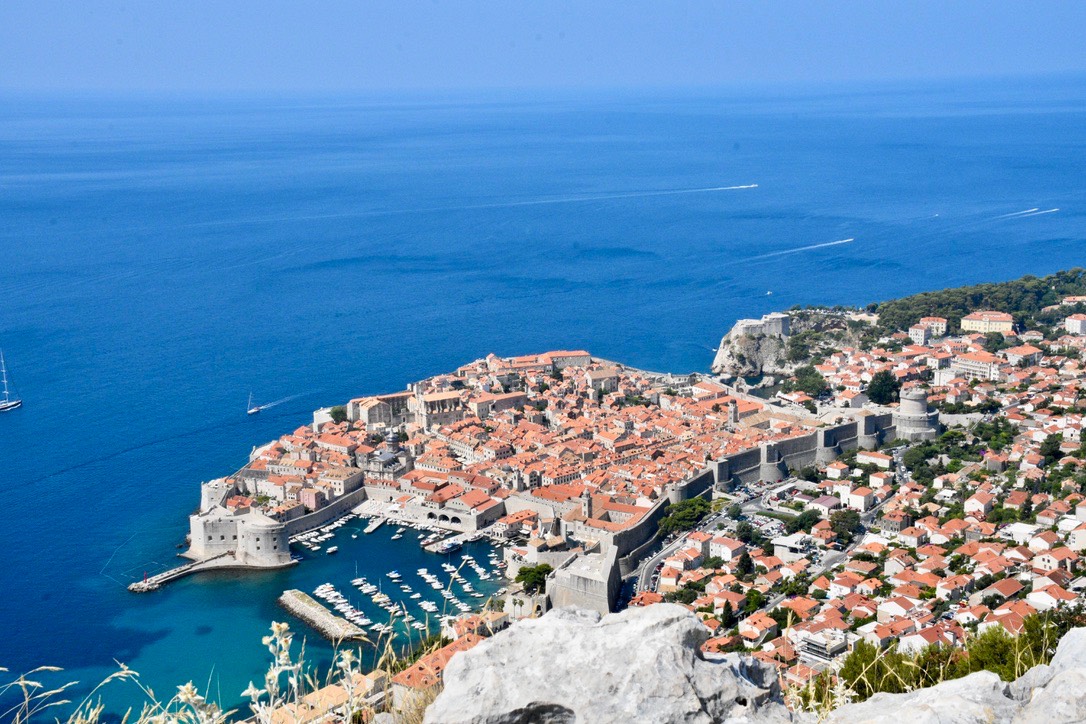
The city of Dubrovnik has a long and complicated history, thanks to its strategic location as a trading center connecting Europe to Asia. Though the city has existed since Roman times, the walled city that stands today was originally built by the Venetians, who called the city by its Greek name of Ragusa.
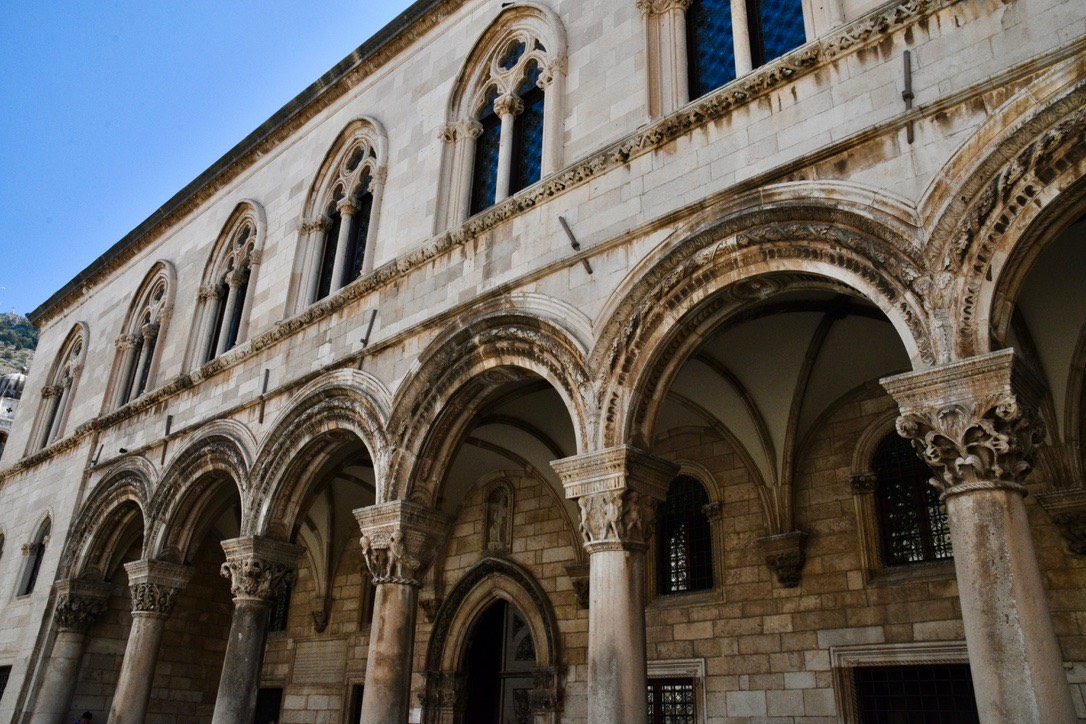
Commerce and trade made the city of Dubrovnik wealthy and powerful, and eventually, Dubrovnik won its independence from Venice and established the Republic of Ragusa, a self-governing city-state. During the period of self-rule— lasting from the fourteenth to early nineteenth centuries— the city flourished, with many grand and elaborate structures being built within the city walls.
The city-state of Dubrovnik was fabulously wealthy and surprisingly advanced. It was ruled not by a king, but by a mayor who was elected to serve a thirty-day term by the nobles of the city. Slavery was abolished here in 1419, some 450 years before the United States would achieve the same. Catholic and Orthodox churches co-existed in the city, and Dubrovnik even hosted one of the first Jewish synagogues in Europe.
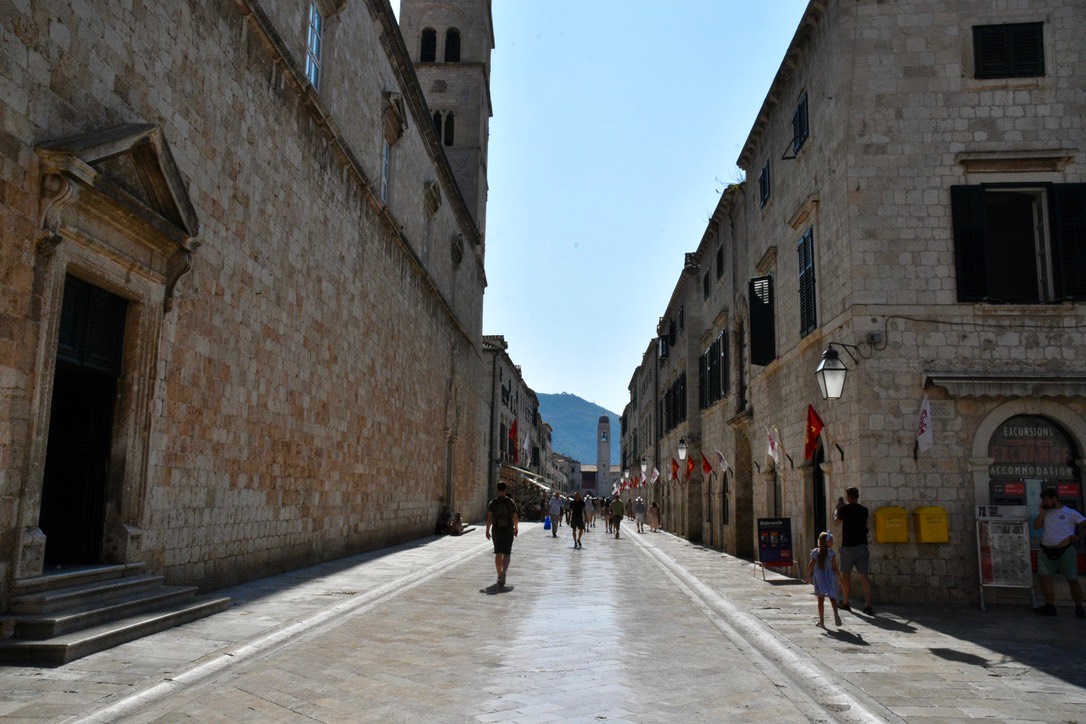
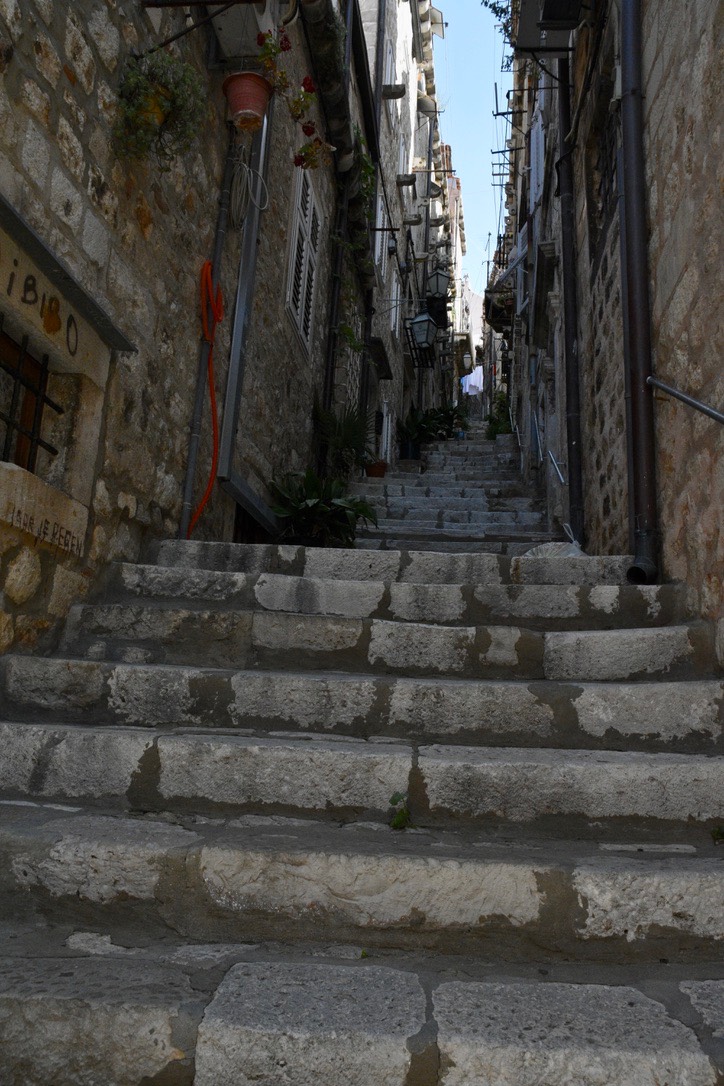
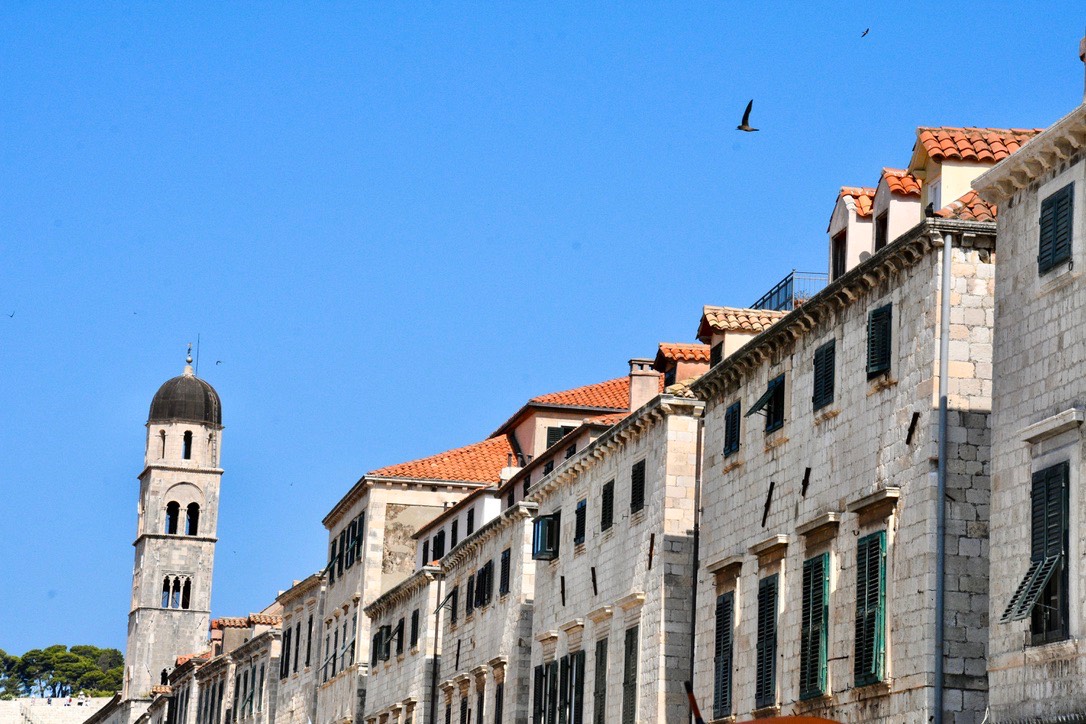
After touring the city on foot, we drove to the top of a nearby mountain for a panoramic view of the old town from above.
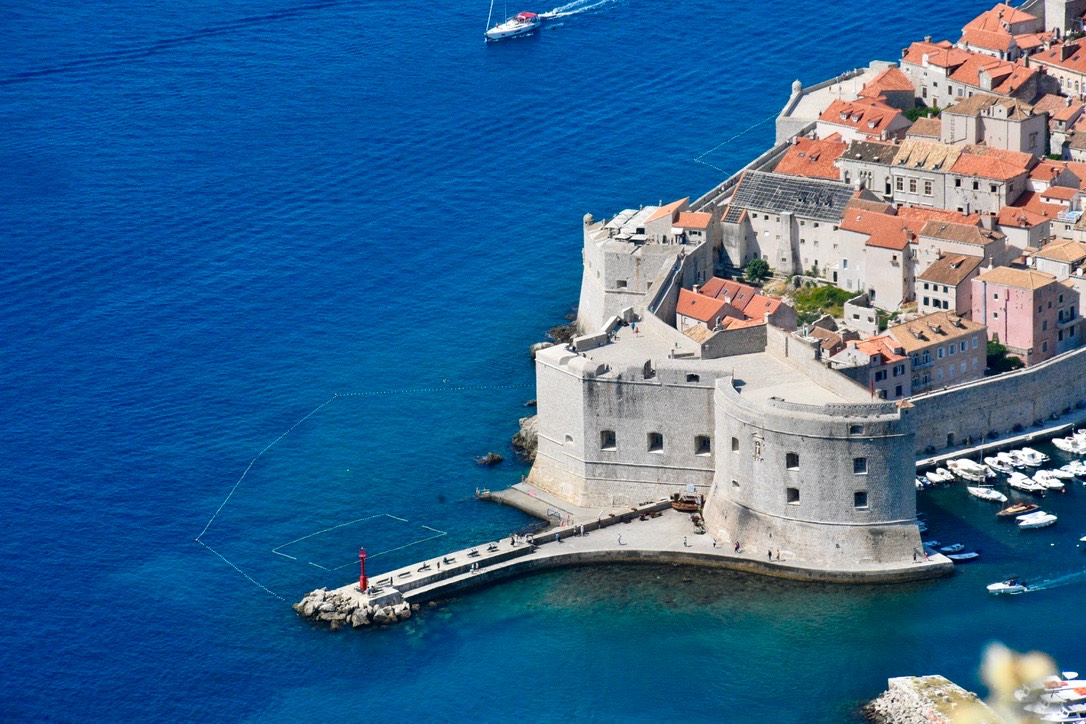
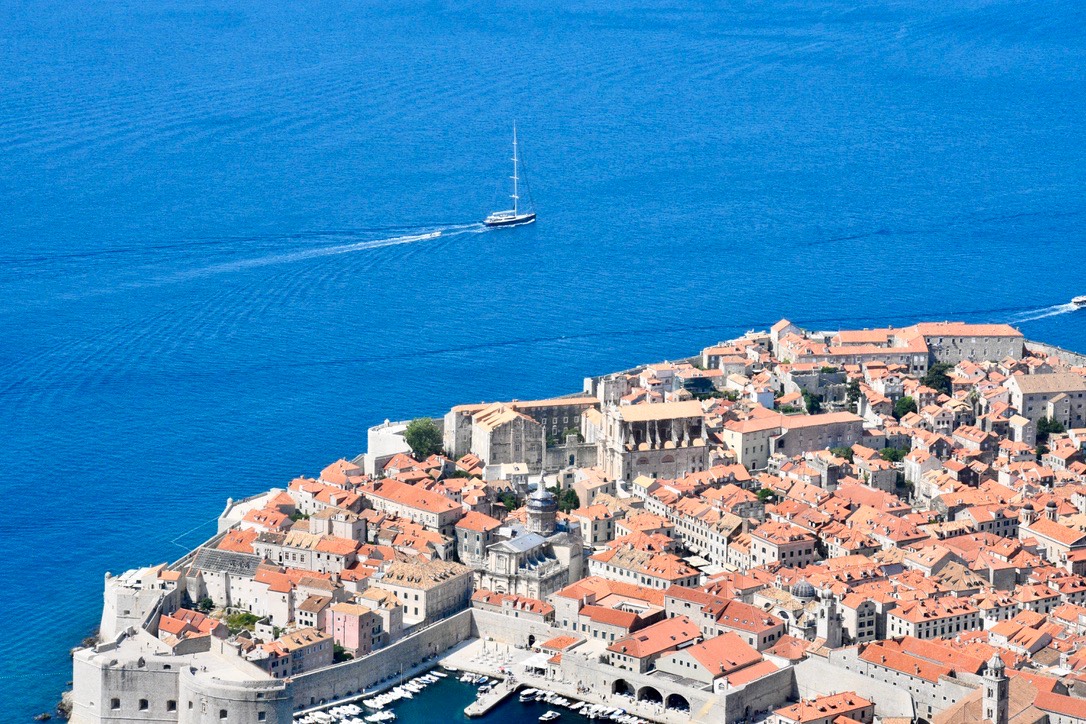
Though Dubrovnik enjoyed considerable sovereignty and stability during the era of the Republic, its history since the Republic’s fall has been tumultuous. In the nineteenth and twentieth centuries alone, Dubrovnik was controlled by the Ottoman Empire, Napoleon’s Imperial France, the Austro-Hungarian Empire, the Kingdom of Serbs, Croats, and Slovenes, Nazi Germany, socialist Yugoslavia, and the modern nation of Croatia. The city has survived countless invasions, conquests, earthquakes, and floods. However, the closest the city ever came to destruction was in 1991, when Dubrovnik was besieged by Serbia during the Yugoslav Wars.
As the united socialist state of Yugoslavia collapsed in the wake of President Josip Broz Tito’s death in 1980, nationalistic movements began to awaken across the country, growing increasingly powerful by the early 1990s. Croatia’s growing desire for independence did not sit well with Slobodan Milosevič, an ultranationalist politician who had recently come to power in Serbia and dreamed of expanding his country’s territory into a “Greater Serbia." Milosevič’s forces invaded Croatia in 1991, and a brutal and destructive civil war erupted, with atrocities being committed on all sides.
Dubrovnik was blockaded and relentlessly bombed for nine consecutive months. Within the old city, one can still see marks made by exploding shrapnel grenades etched into the stones of centuries-old churches and streets.
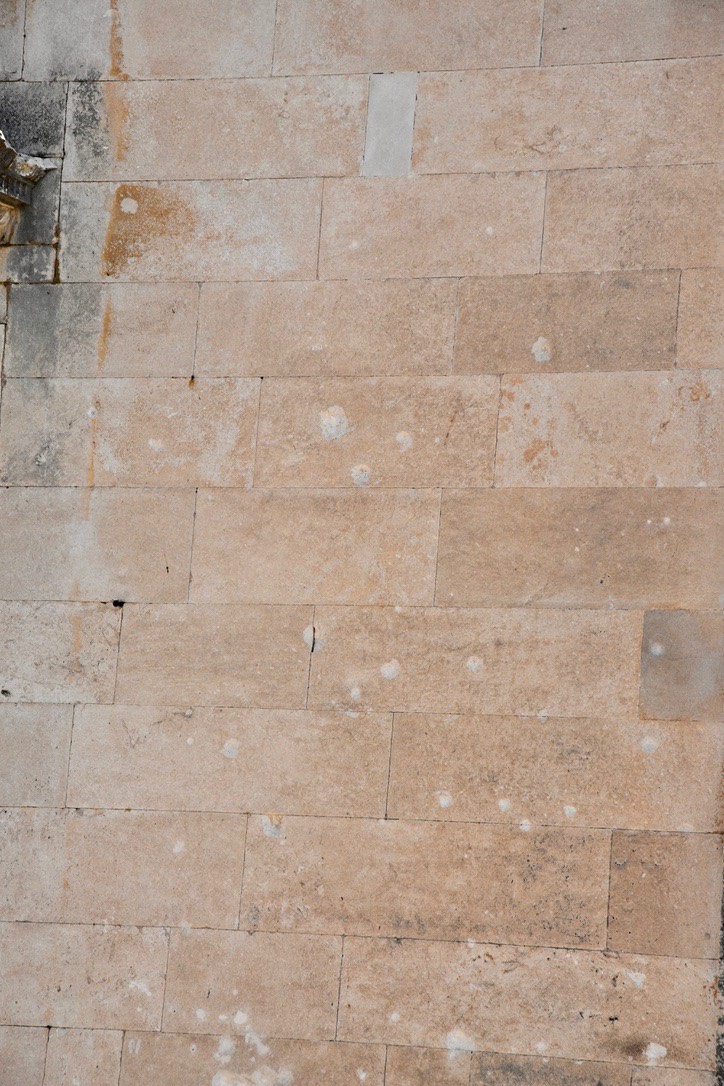
The village of Kupari, situated on a calm bay with beautiful sandy beaches, was once home to some of the most luxurious hotels in all of Yugoslavia. During the war, they were bombed and shelled from afar, and when Serbian troops made landfall, they systematically burned the hotels with deadly white phosphorus. Though anything of value was long ago destroyed or stolen, their stone and concrete husks, pockmarked by burn scars and bullet holes, remain standing today as a grim reminder of the devastation that befell this coastal town just thirty years ago.
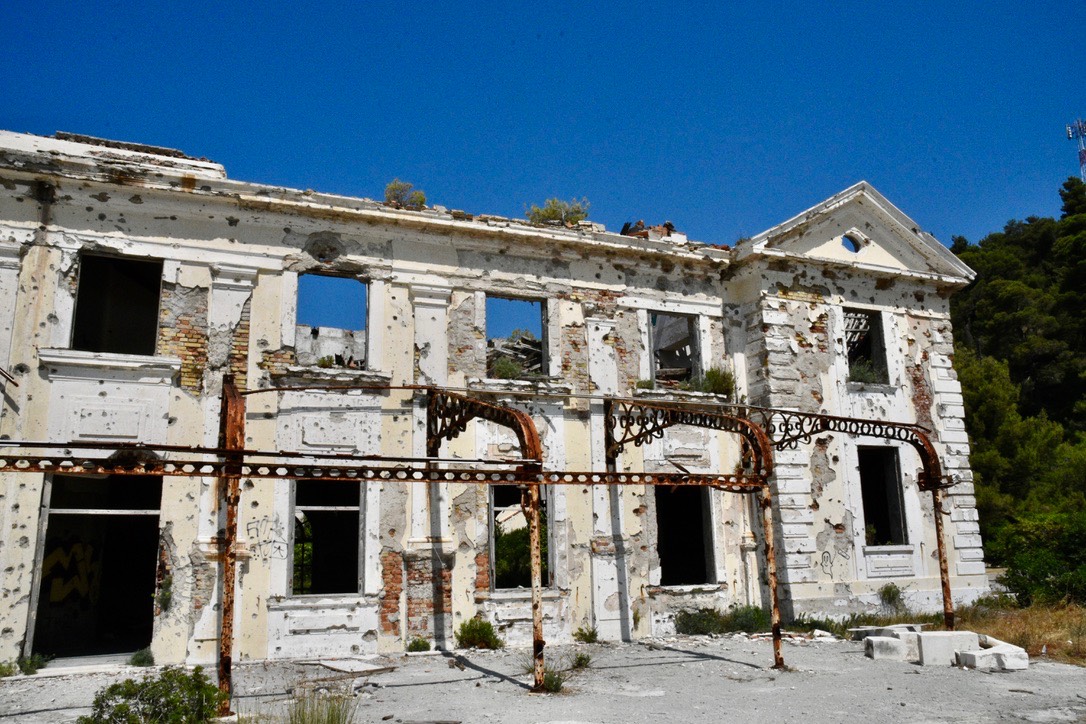
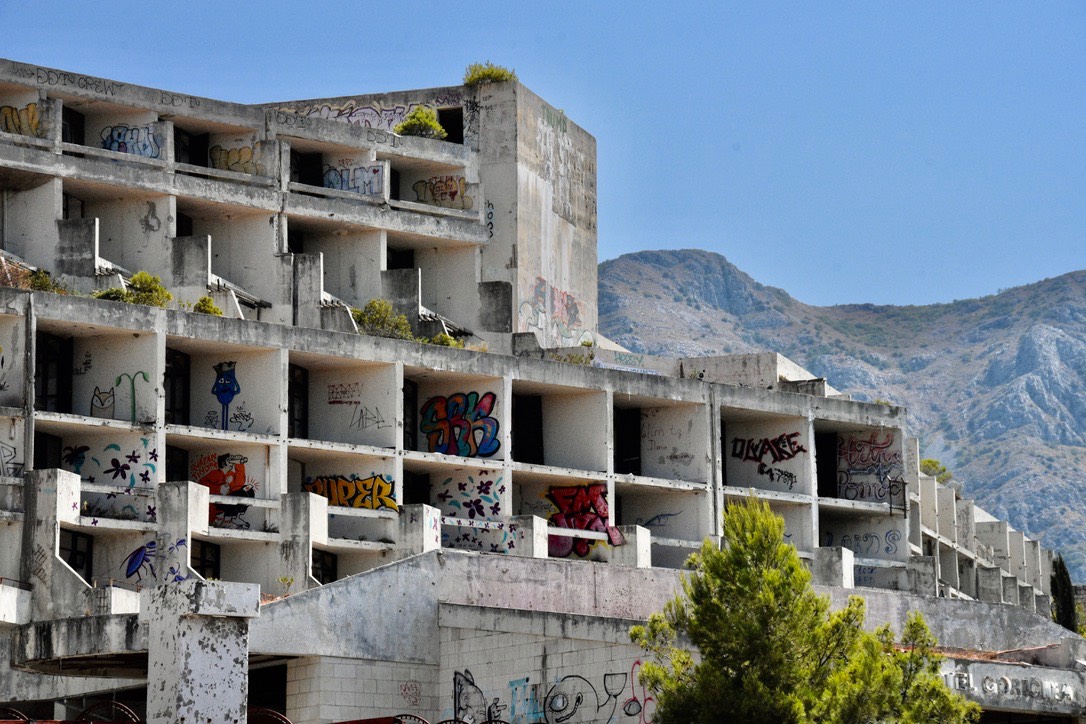
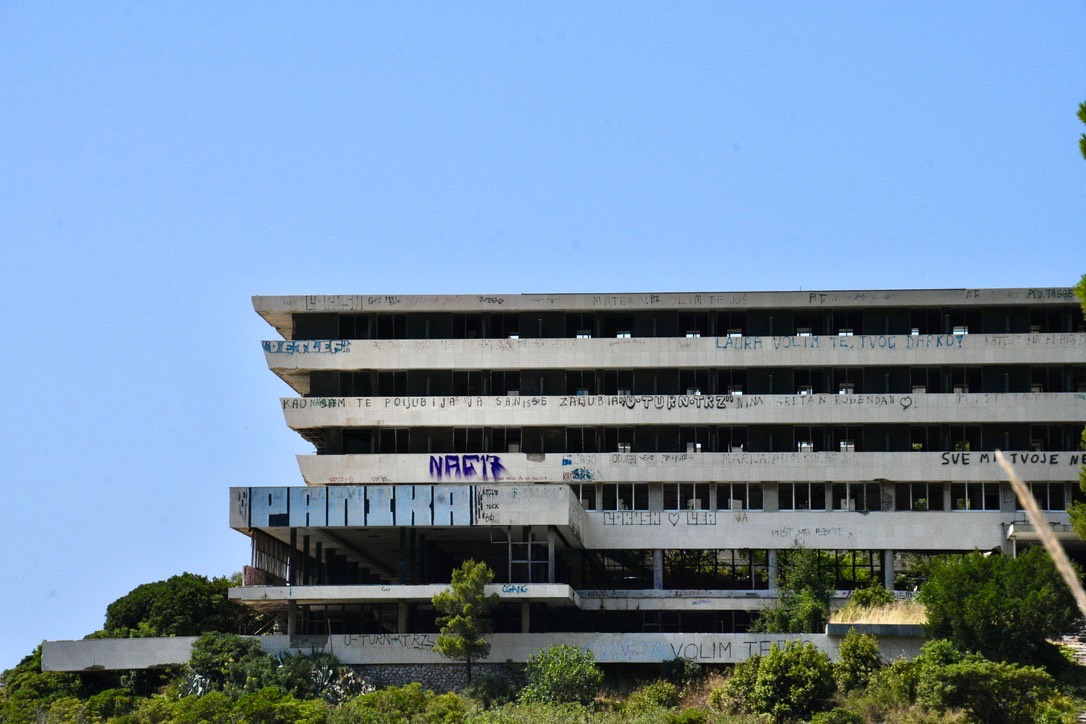
Our final stop was the small coastal town of Cavtat. Here, the smell of pine hangs over narrow gravel paths, with white sand beaches and rocky tide pools ringing crystal-blue coves.
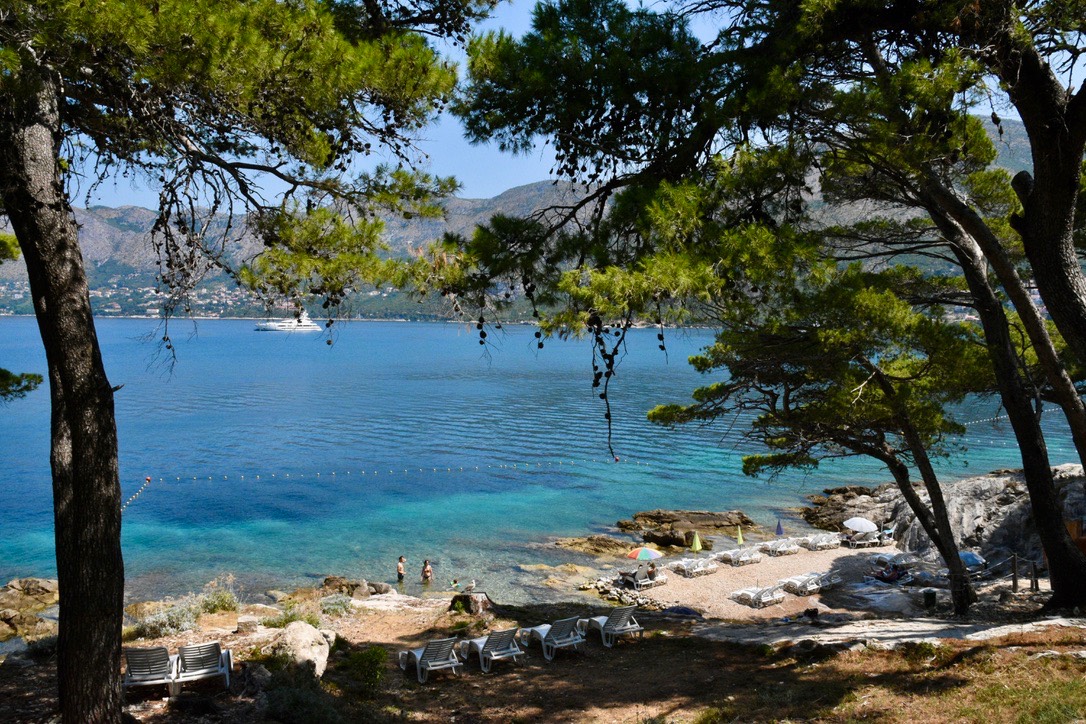
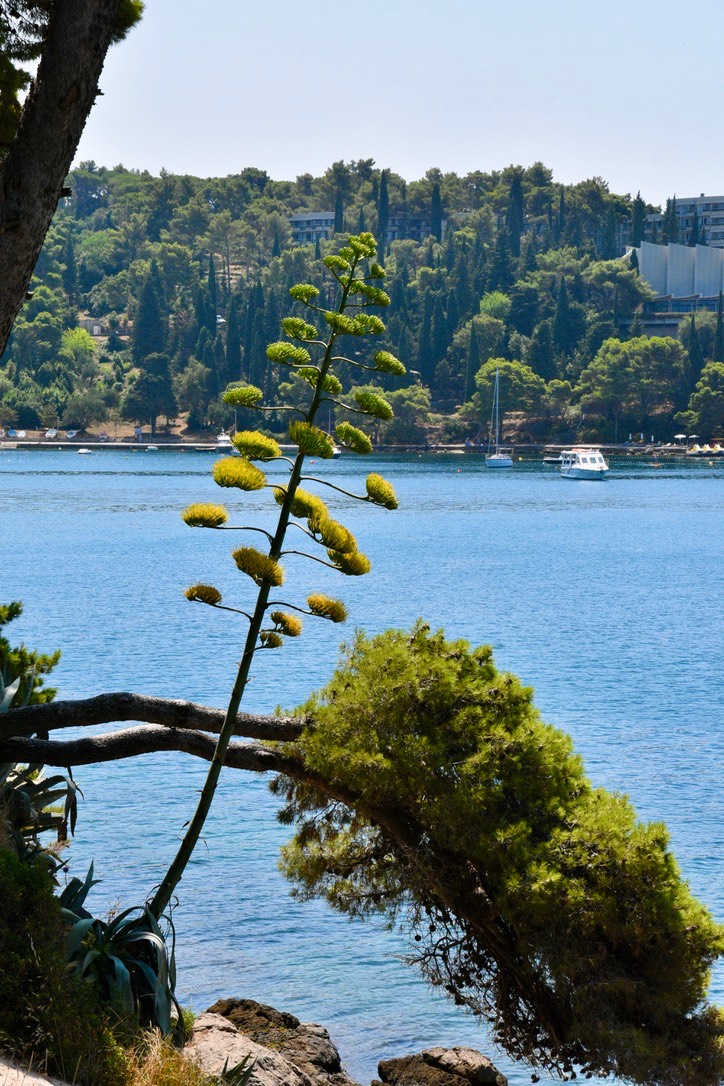
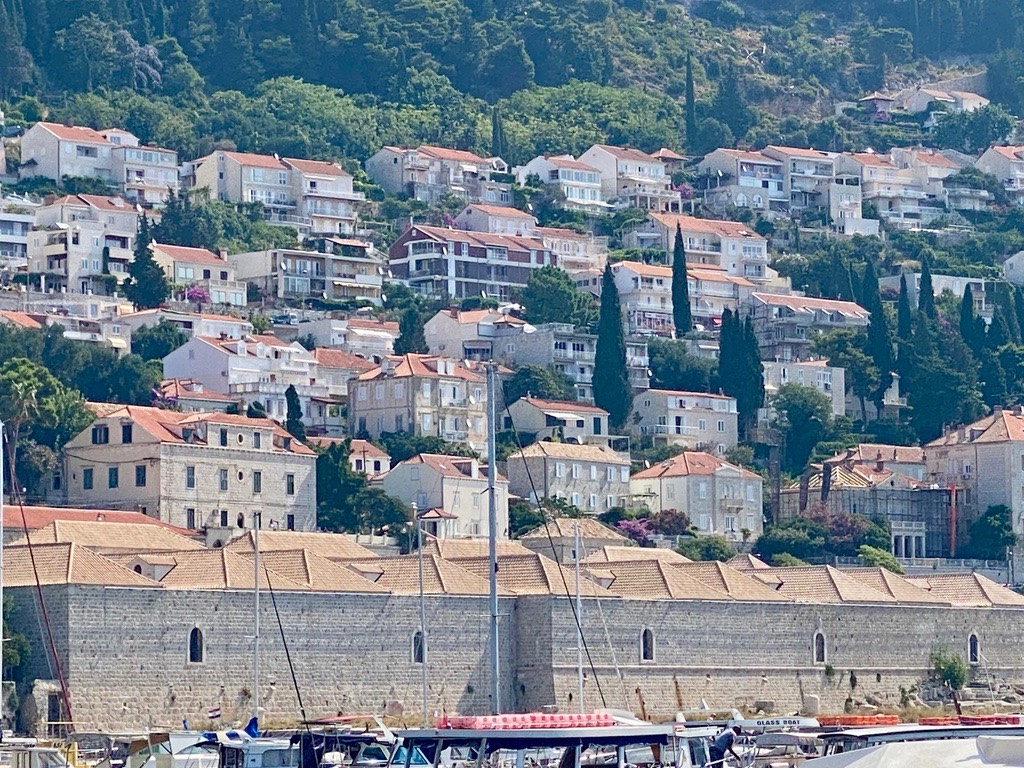
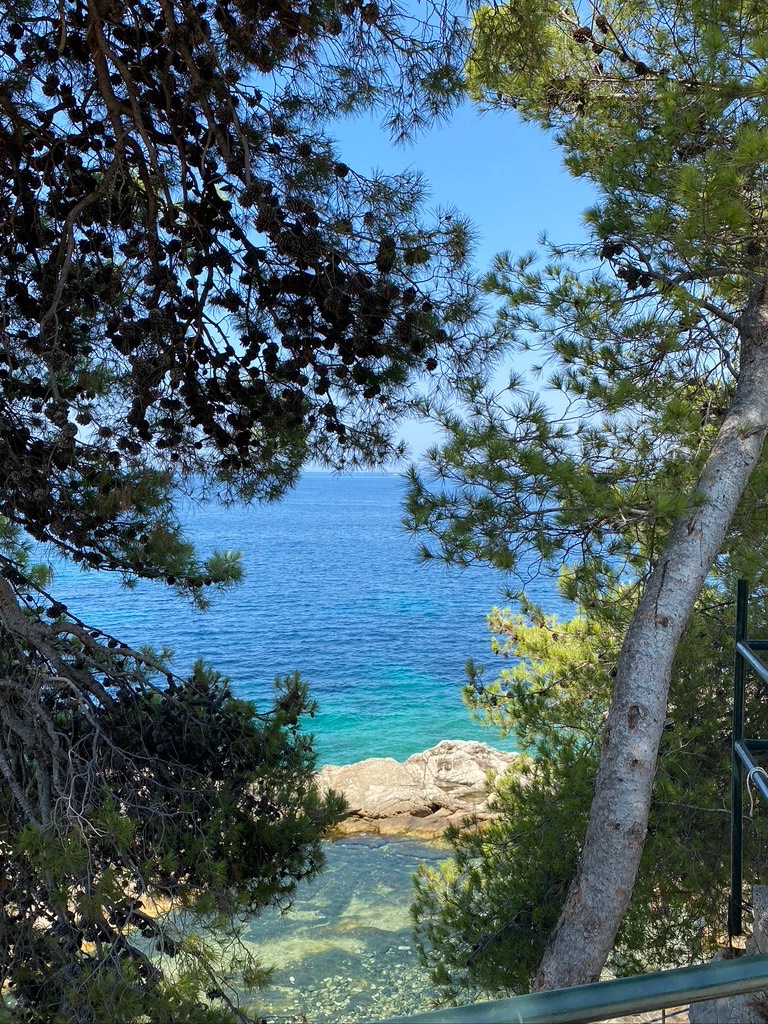
Cavtat’s natural beauty and historic character are spectacular. Rising from the idyllic landscape, however, are a few ugly reminders of the unimaginable suffering that befell this place just a generation ago. Nestled among the red-roofed houses and tall pines are the bombed-out remains of more concrete Yugoslav-era hotels, places that were once the height of luxury, but are now ghosts of a tragic past.
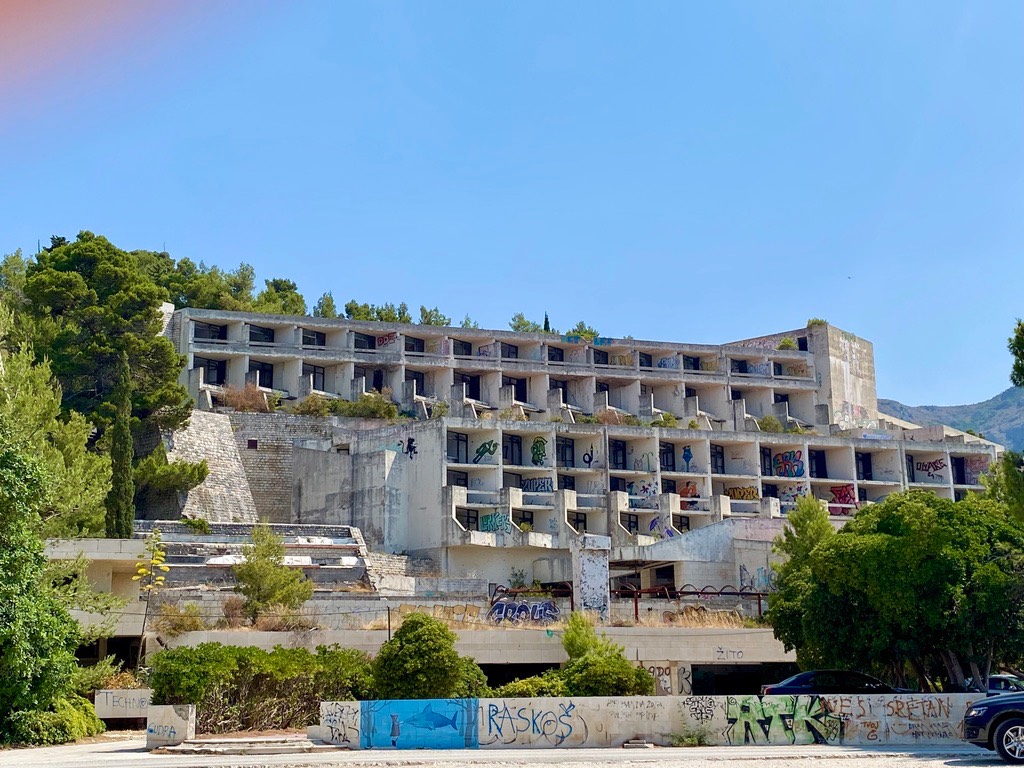
After walking around the entire peninsula of Cavtat and eating lunch at a Michelin-star restaurant, we returned to our hotel in Dubrovnik. Tomorrow, we will fly back to Athens for one more day; after that, the long flight home to the East Coast awaits.
- Hayden Strong
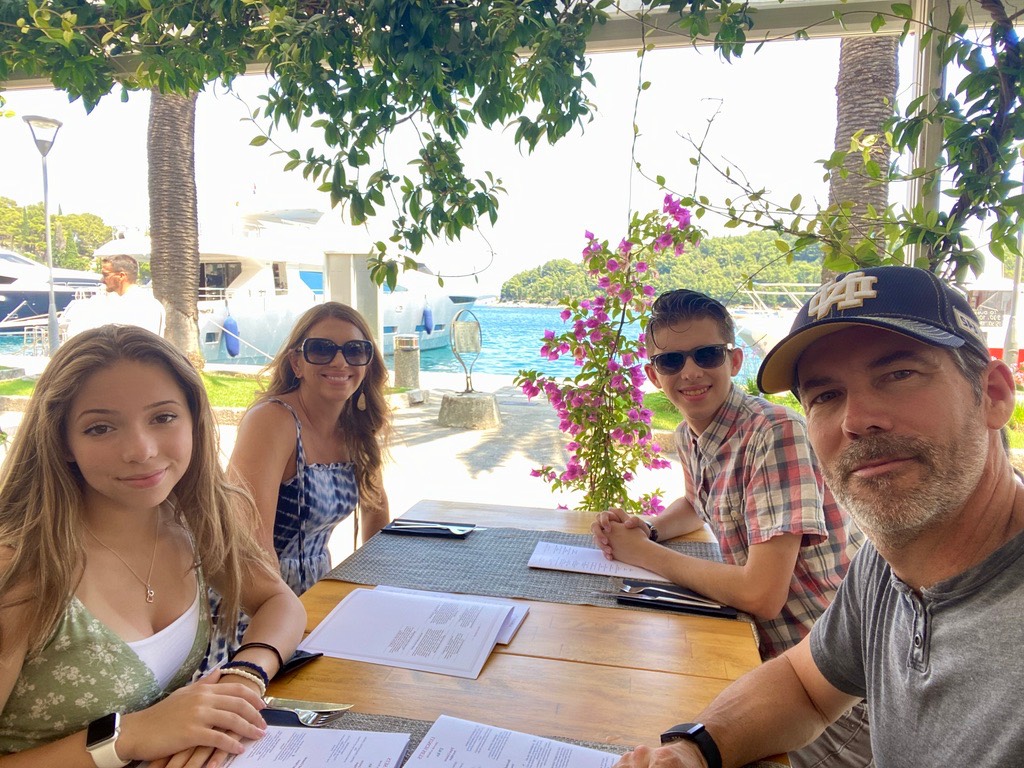
No. 3 - Boka Kotorska
21 July 2021
Yesterday, we boarded an Aegean Air flight from Athens to the coastal city of Dubrovnik, located in the south of Croatia. Today, we were picked up by our driver for an all-day sojourn down the Adriatic coast.
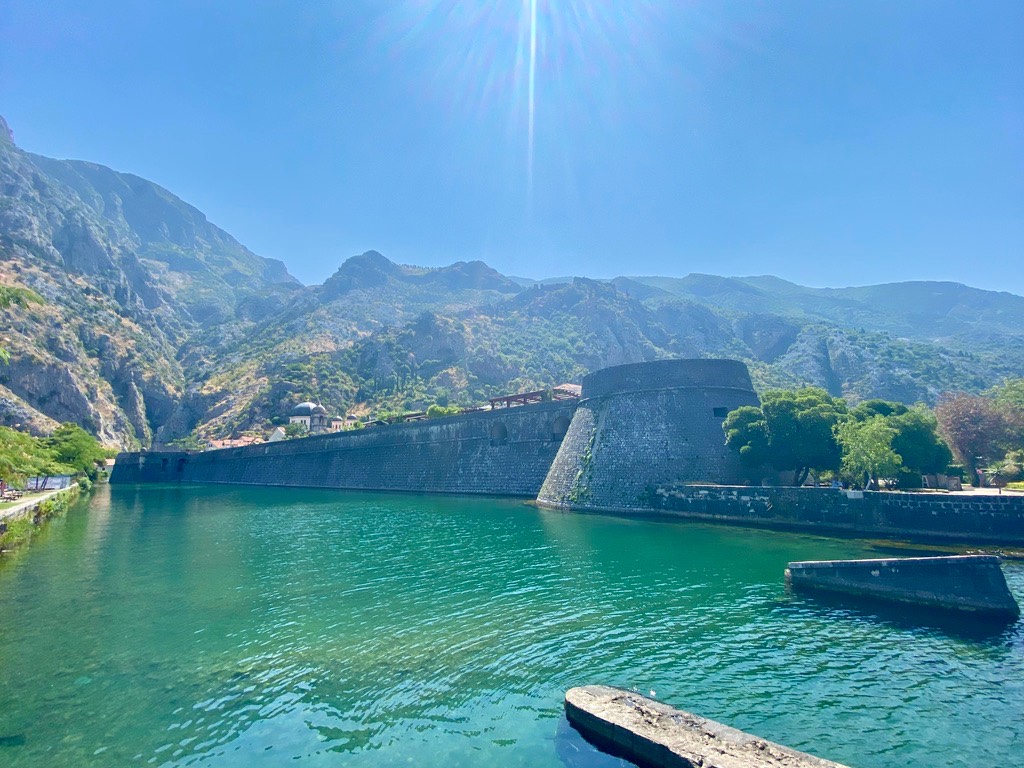
Driving south from Dubrovnik, we first passed through the Konavle region of Croatia before crossing the border into Montenegro. Montenegro is the youngest universally recognized European country; it gained independence from Serbia via referendum in 2006. Like Croatia, Montenegro was formerly part of the Socialist Federal Republic of Yugoslavia, which also included the modern states of Slovenia, North Macedonia, Serbia, Bosnia and Herzegovina, and Kosovo.
Our first stop was the small village of Perast, located on the shores of the Bay of Kotor, called Boka Kotorska in the Serbo-Croatian language.
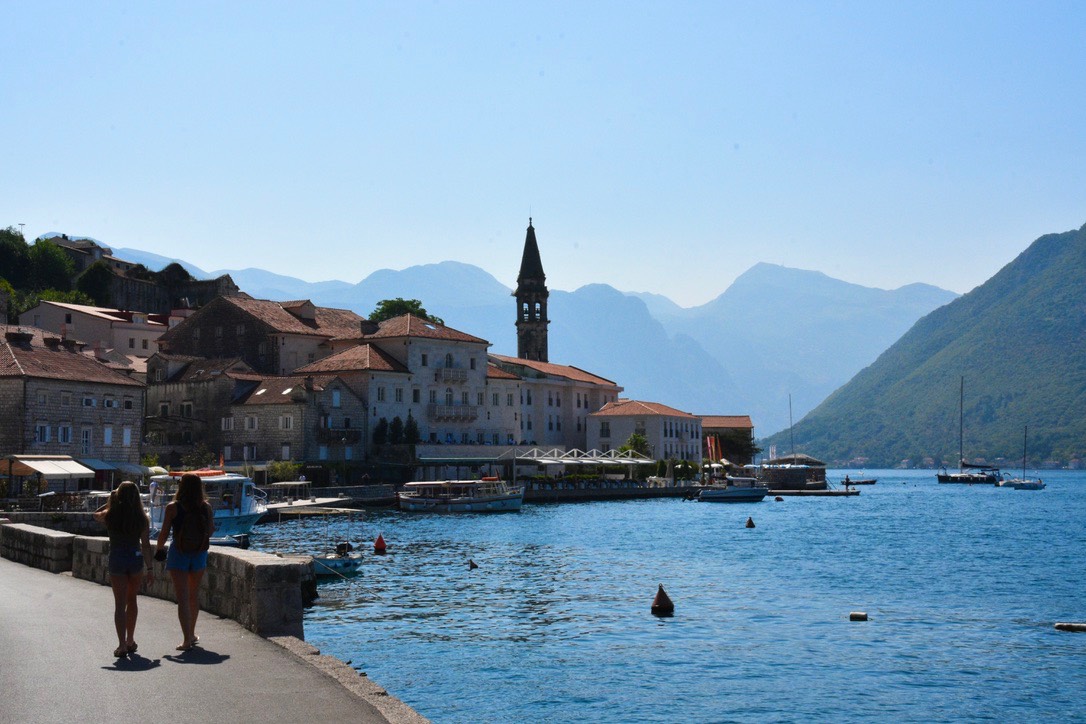
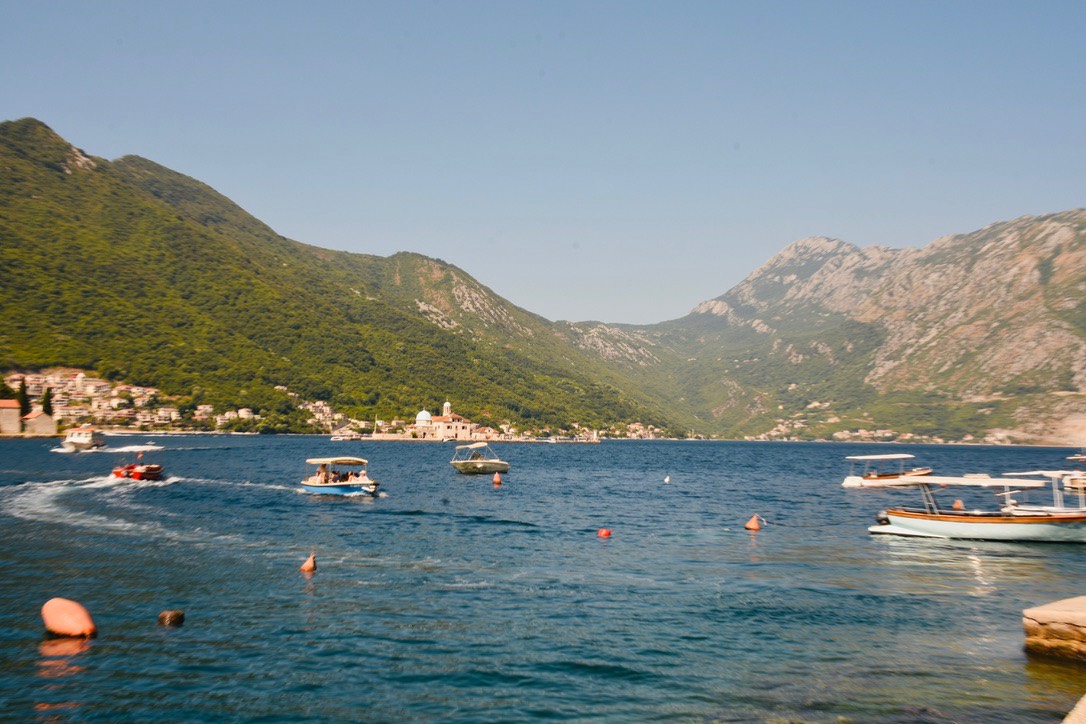
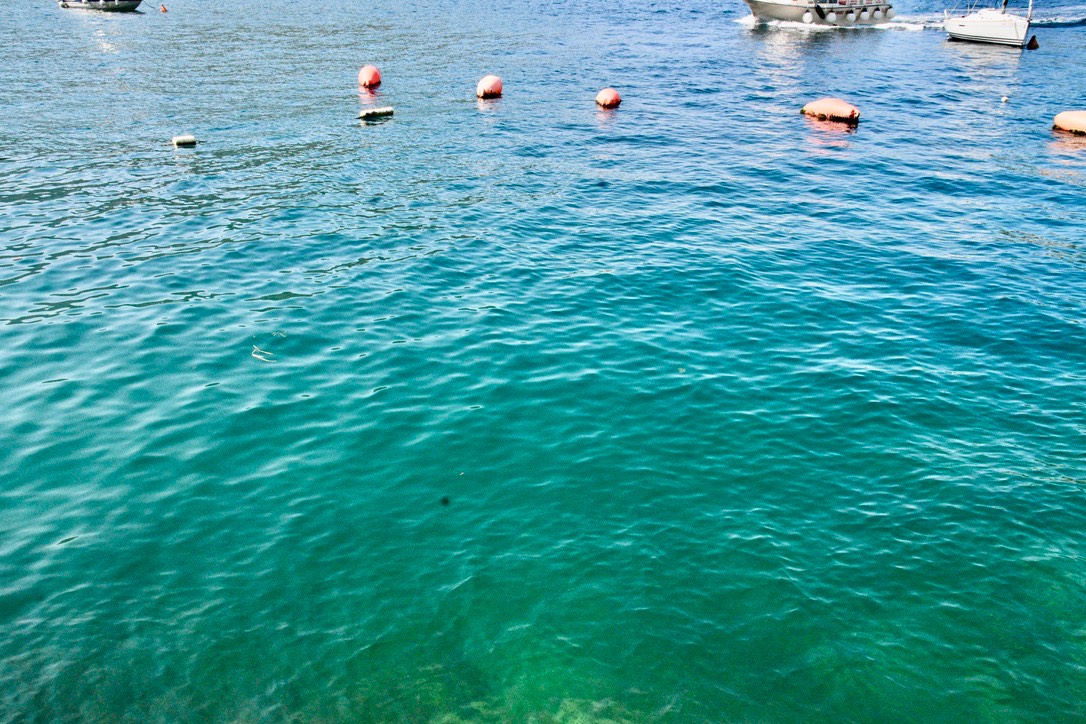
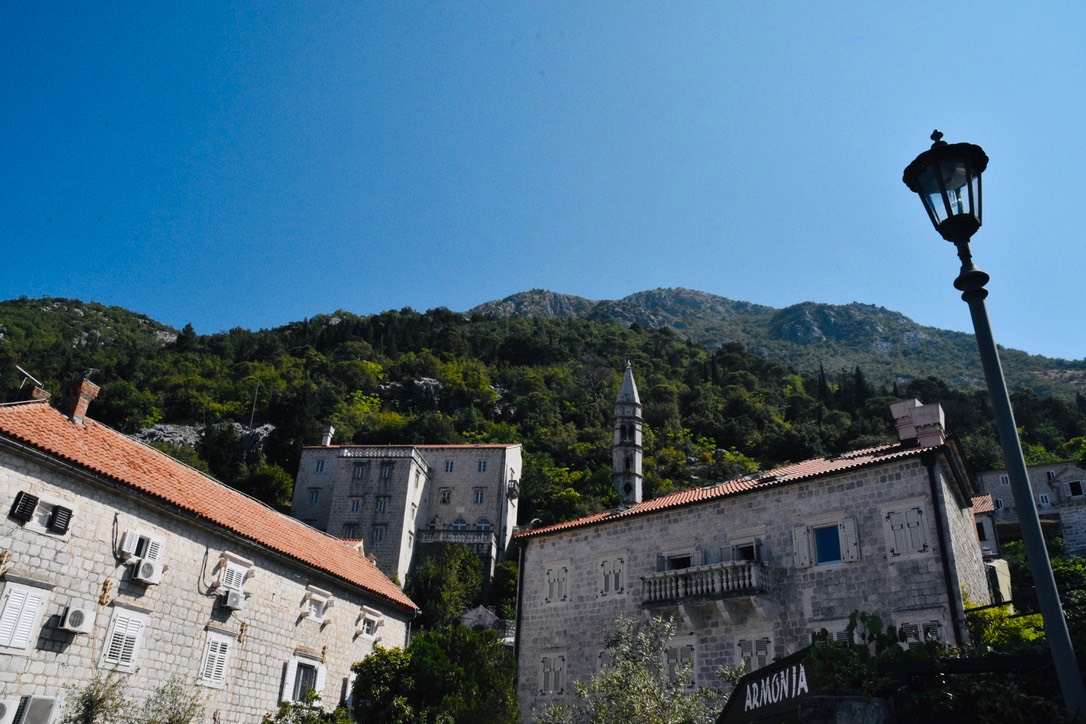
Sheer cliffs hundreds of feet high rise on either side of the bay, with small villages of red-roofed stone structures nestled into the hills along the coast. Schools of shiny silver fish swim in the crystal-blue water. Unlike the austere arid beauty of Santorini, the mountains here are lush and covered with trees, including entire forests of tall, thin cypress.

After stopping for drinks at a bayside café in Perast, we continued on to our next destination, the fortified city of Kotor.
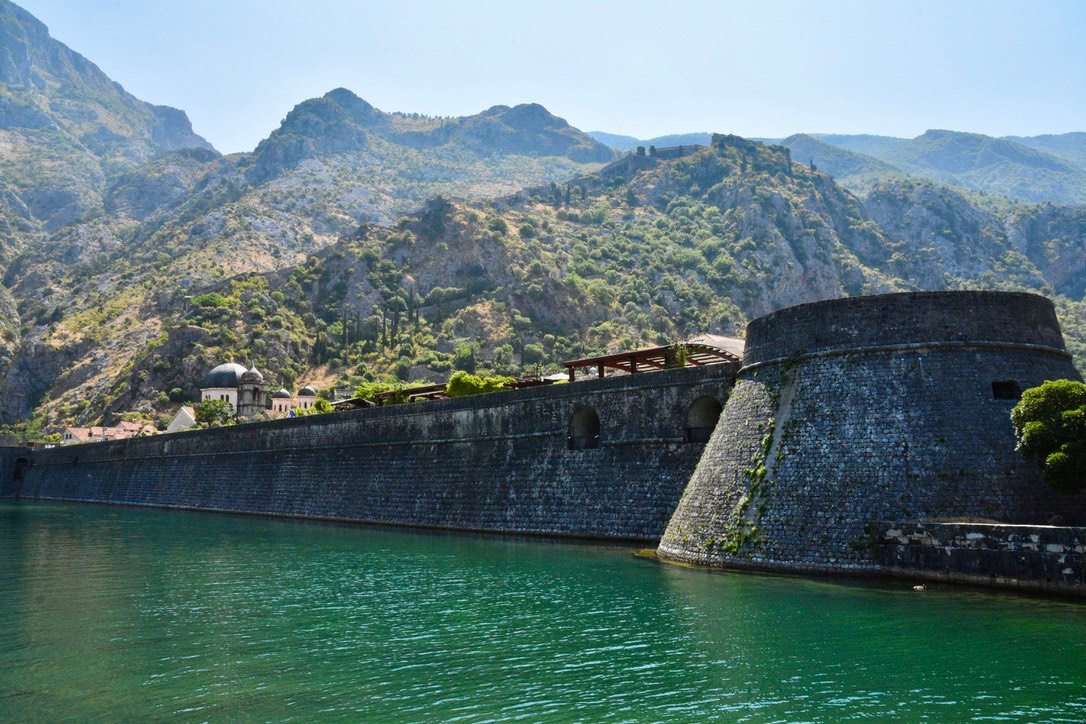
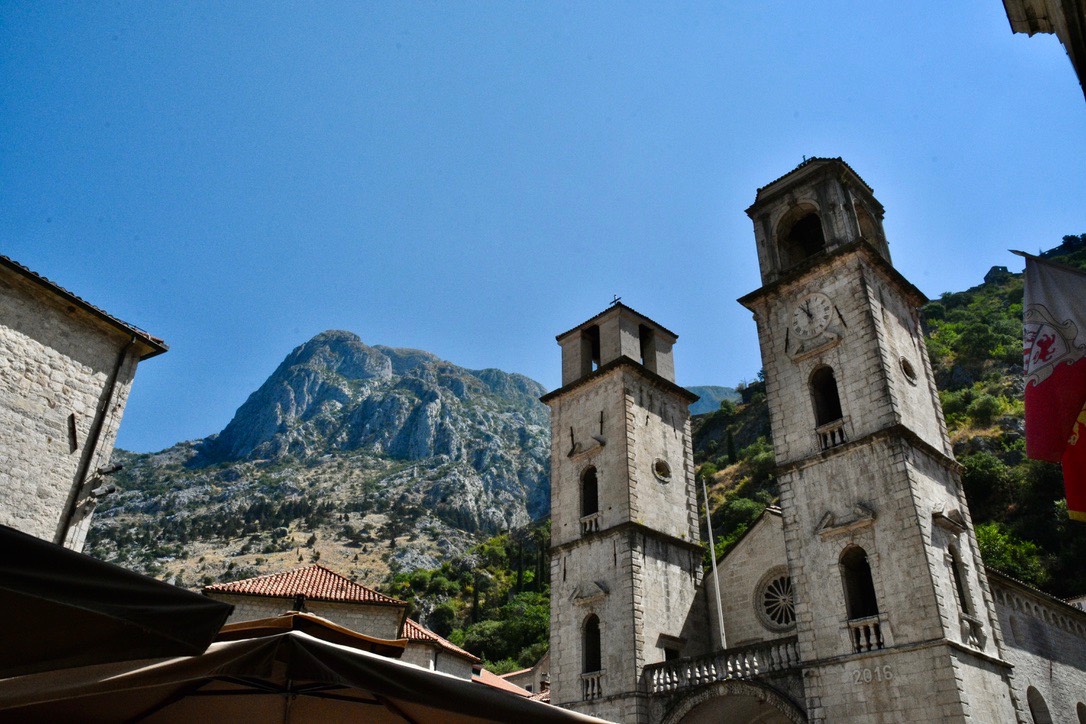
Most of the old city, including its fortifications, was built by the Venetians. During the four hundred year period of Venetian rule, Kotor flourished as a powerful trading center, with many wealthy and influential families constructing ornate mansions within the city walls. Today, the old city is preserved much as it was during medieval times, with narrow, winding cobblestone streets opening into cobbled squares, and the spires, domes, and bell towers of churches rising above a sea of red roofs.
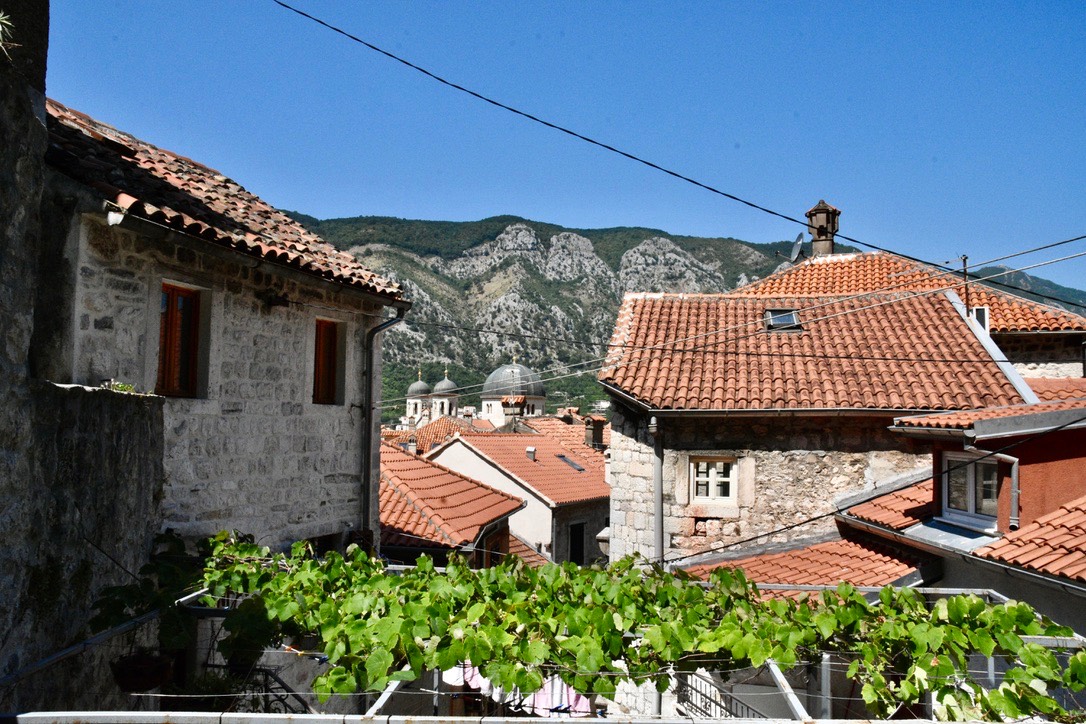
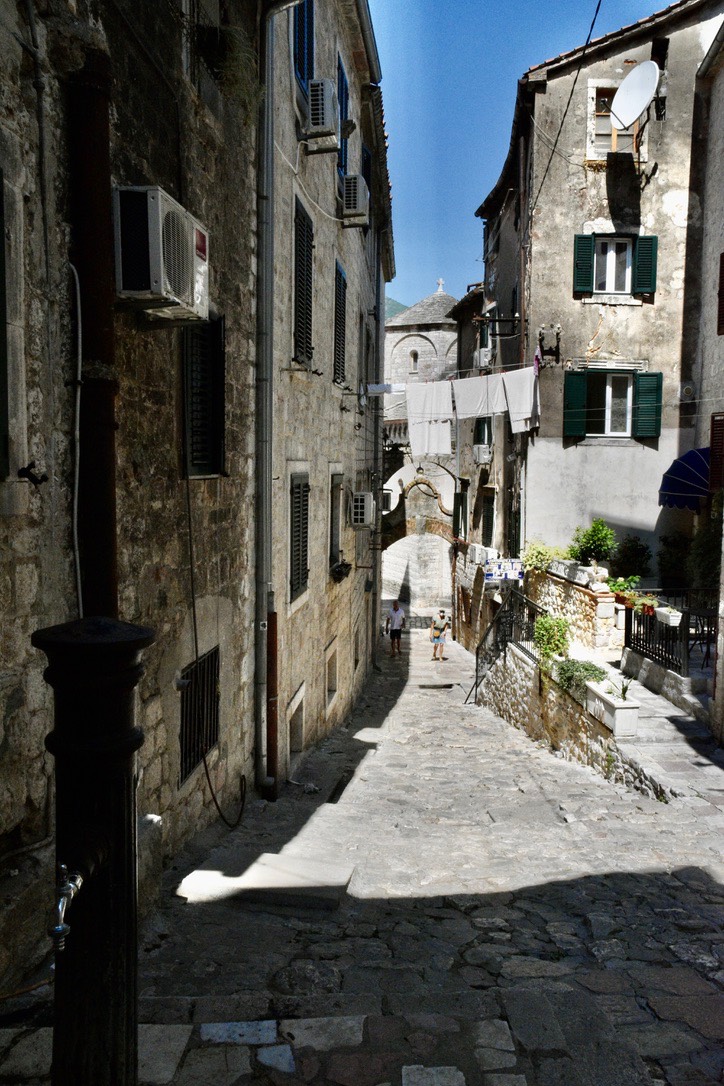
Though the old city of Kotor is a tourist attraction, many people still live and work in this medieval city as they would in any other town. We saw the offices of dentists and attorneys advertised alongside souvenir shops and cafés, coexisting within the centuries-old medieval buildings of Kotor.
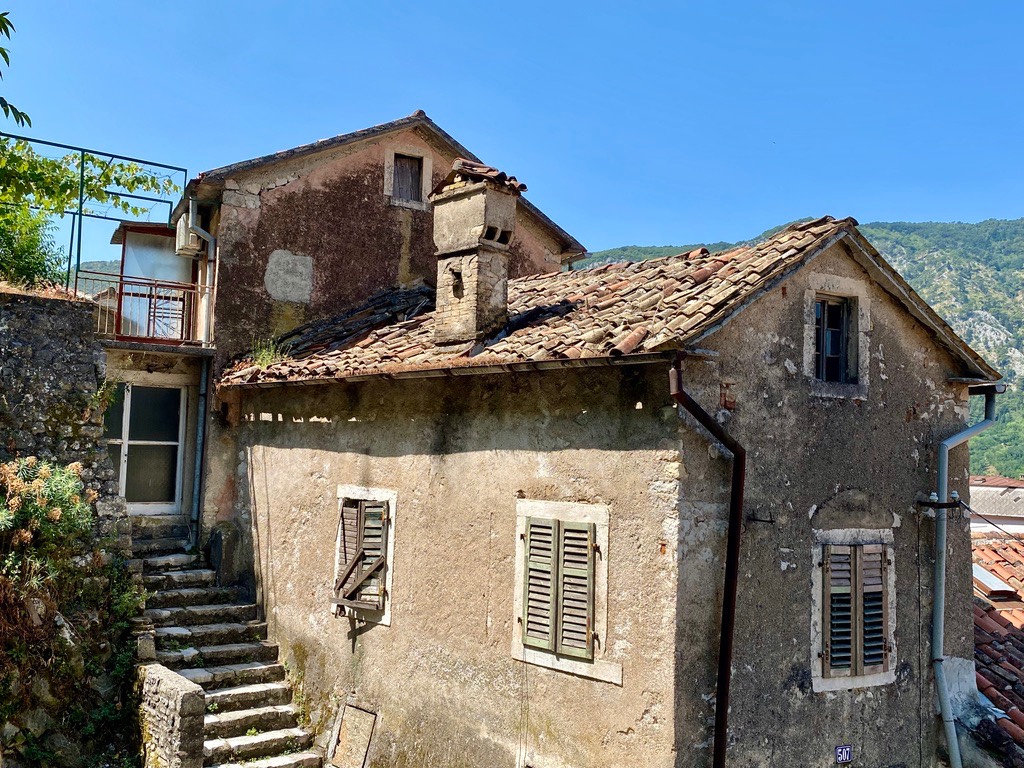
Our final stop before returning to Croatia was the town of Budva. Unlike the quaint village of Perast and the preserved medieval town of Kotor, Budva is currently undergoing massive redevelopment, with enormous high-rise residential buildings and hotels under construction along the entire bay. This Montenegrin city is a favorite vacation spot among wealthy Russians; here one can find menus printed in English, Russian, and Serbo-Croatian written in both the Latin and Cyrillic alphabets.
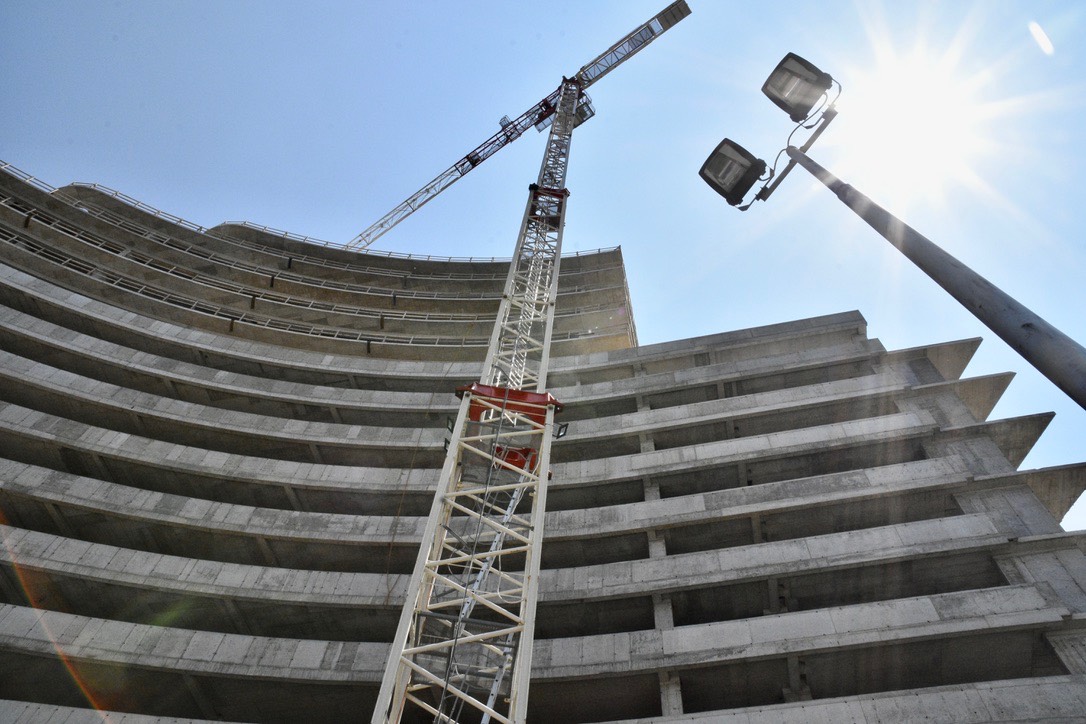
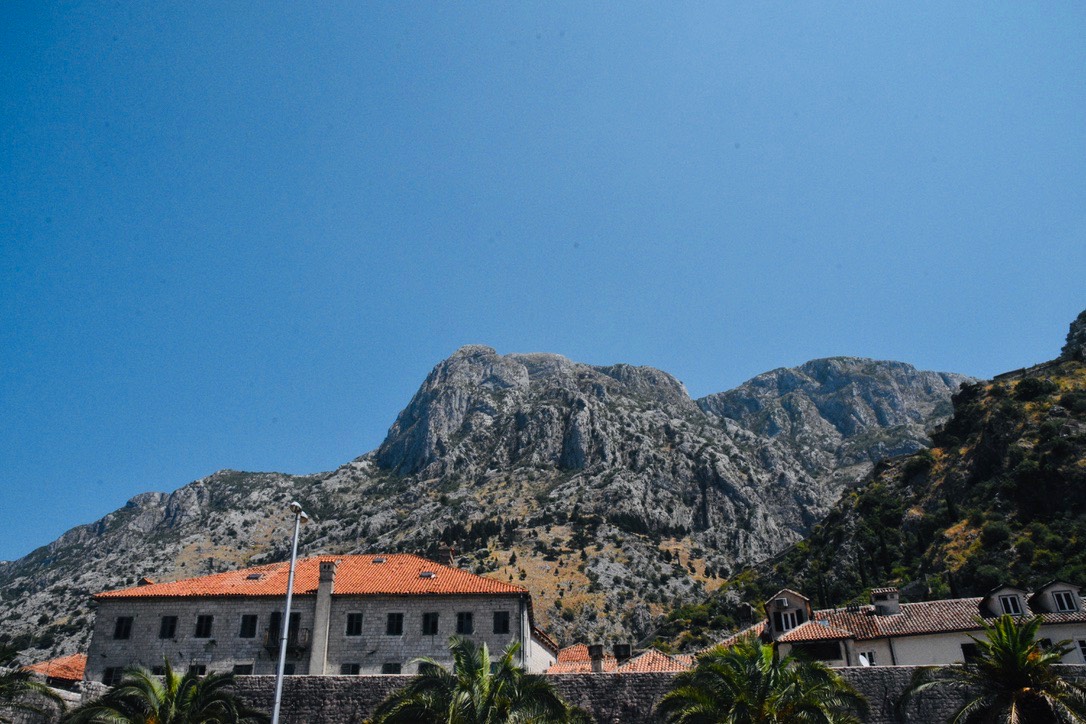
After eating lunch— the best of the entire trip so far— in Budva, we returned to our car for the drive back to Dubrovnik. To save time, we took a car ferry across Boka Kotorska, and were lucky to have only a short line at the border checkpoint. Because the Croatia-Montenegro border marks the border between EU and non-EU territory, crossings can sometimes take hours.
Tomorrow, we will explore the medieval city of Dubrovnik, and learn the history of another Venetian city that exists in nearly its original form today.
- Hayden Strong
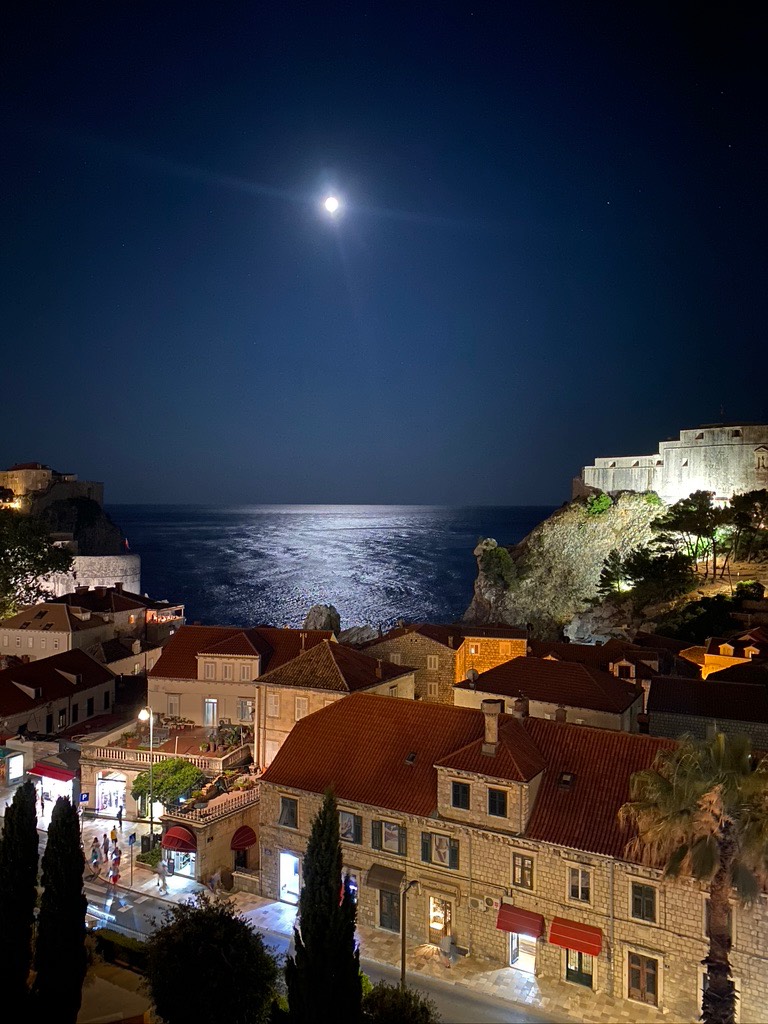
No. 2 - Santorini
17 July 2021
Yesterday, we boarded a small, propeller-driven plane and flew from Athens to the town of Fira, located on the small, volcanic island of Santorini.
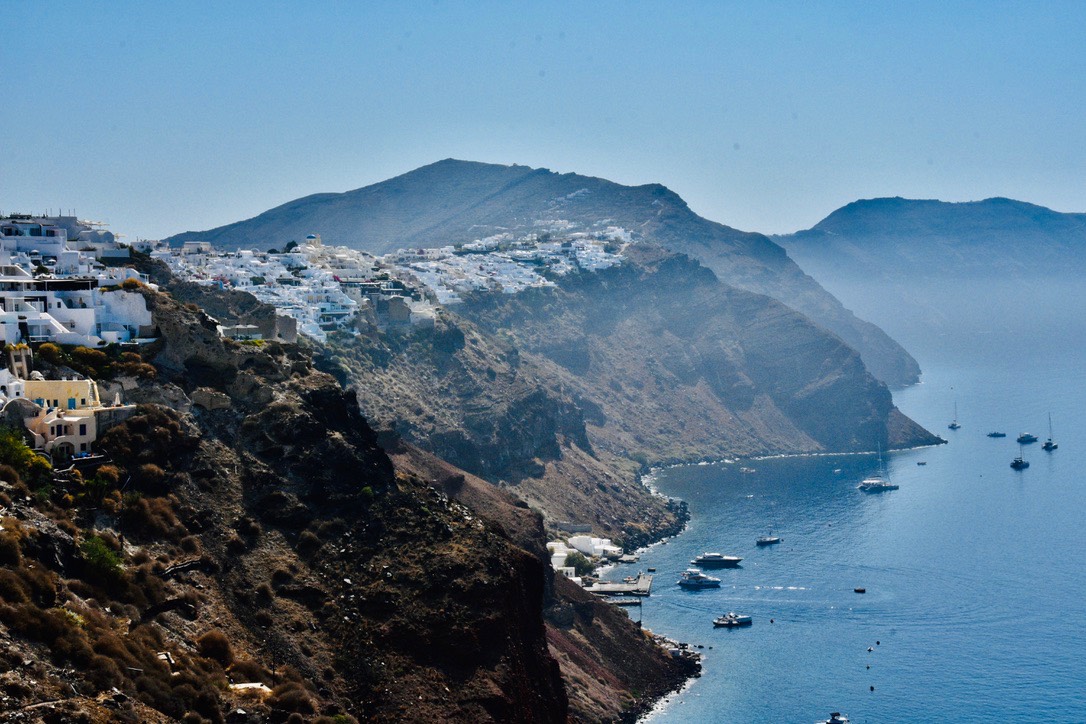
Today, our driver met us in the lobby of our hotel for a five-hour tour of the island and its main sights. Our first stop was the town of Oia, the most famous and popular settlement on the island of Santorini.
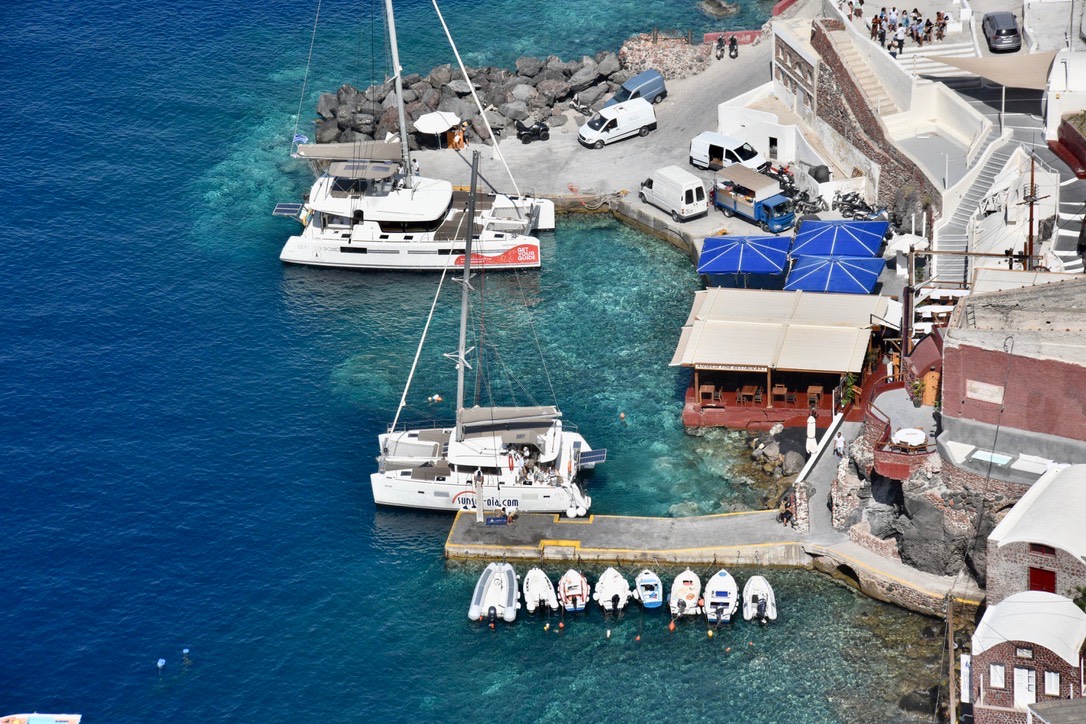
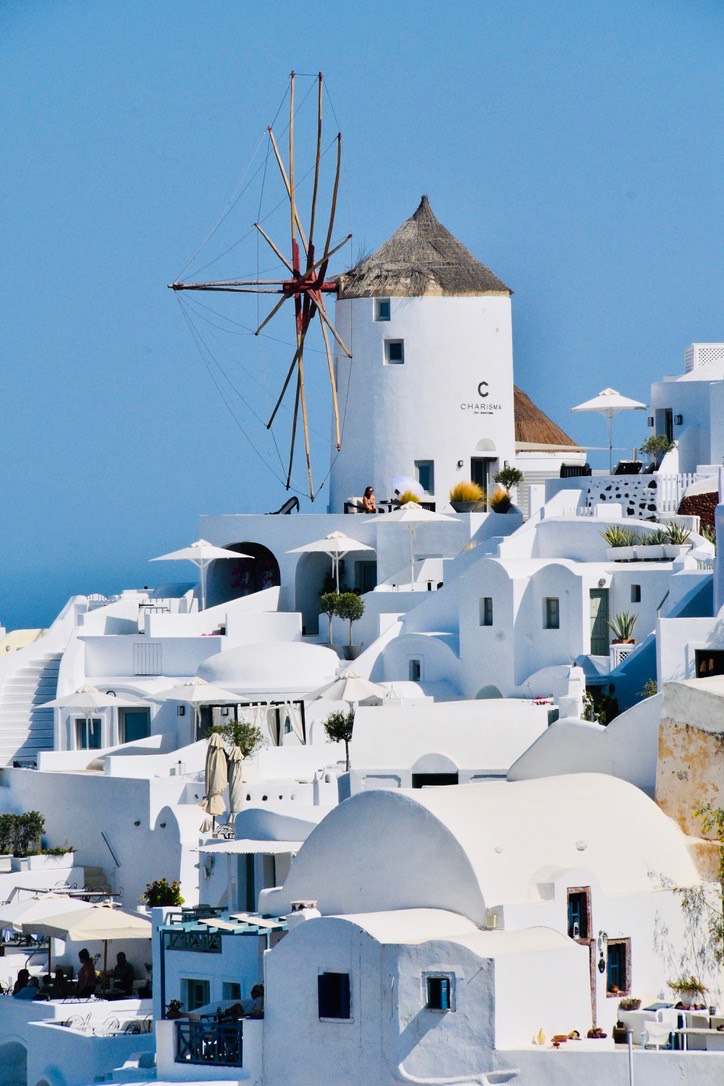
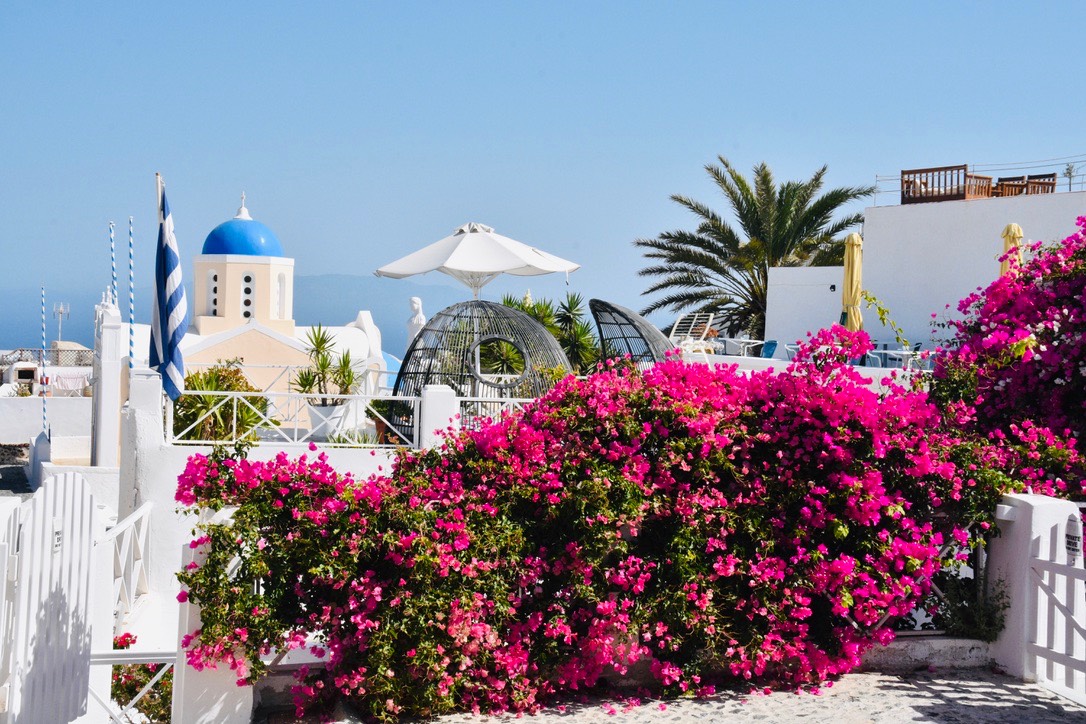
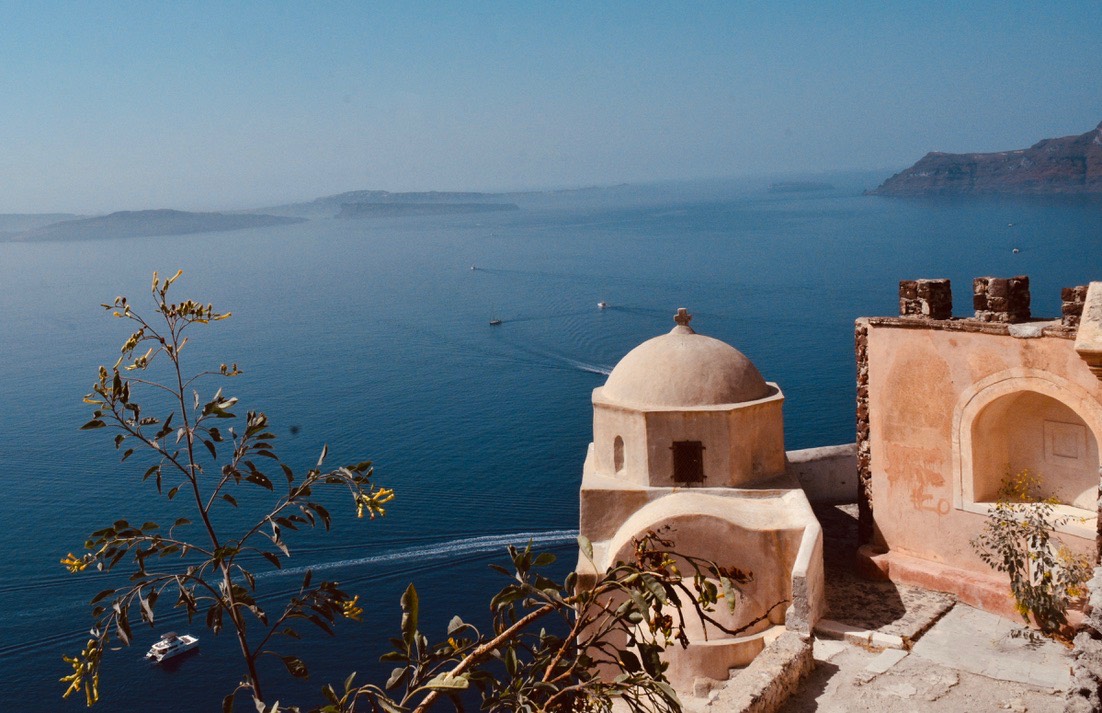
The island of Santorini (called Thira in Greek) is now a crescent shape, but it was not always so. The island was once round, with a great volcano rising at its center. A devastating eruption roughly 3,700 years ago caused the volcano to collapse and created a massive crater, which is now the crystal-blue bay that the town of Oia overlooks. The two small islands in the center of the bay are remnants of the volcanic mountain itself.
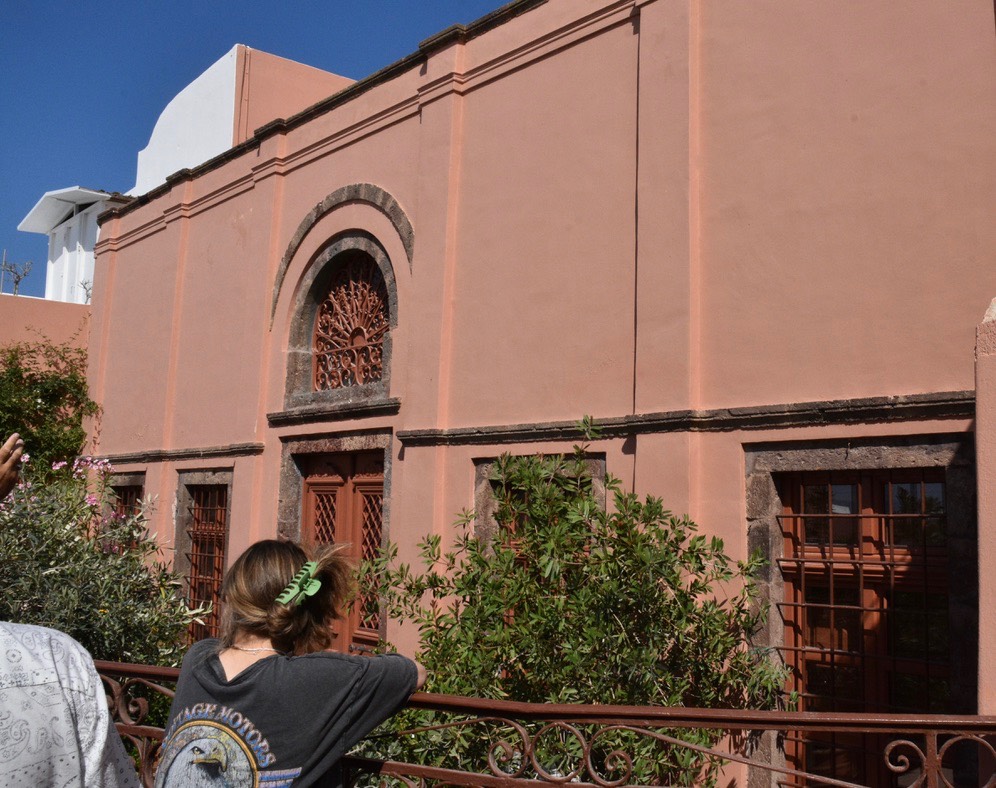
In 1956, a 7.7-magnitude earthquake— many times more powerful than the earthquake that struck Haiti in 2010— destroyed nearly all of the towns and villages on Santorini, including Oia. Nearly every building in Oia collapsed, with the exception of a few large, sturdily built houses built by wealthy merchants in the eighteenth and nineteenth centuries. These homes, such as the one pictured above, were ornately decorated and often featured stone carvings of windmills, Orthodox crosses, and other motifs, such as the traditional Greek meander.
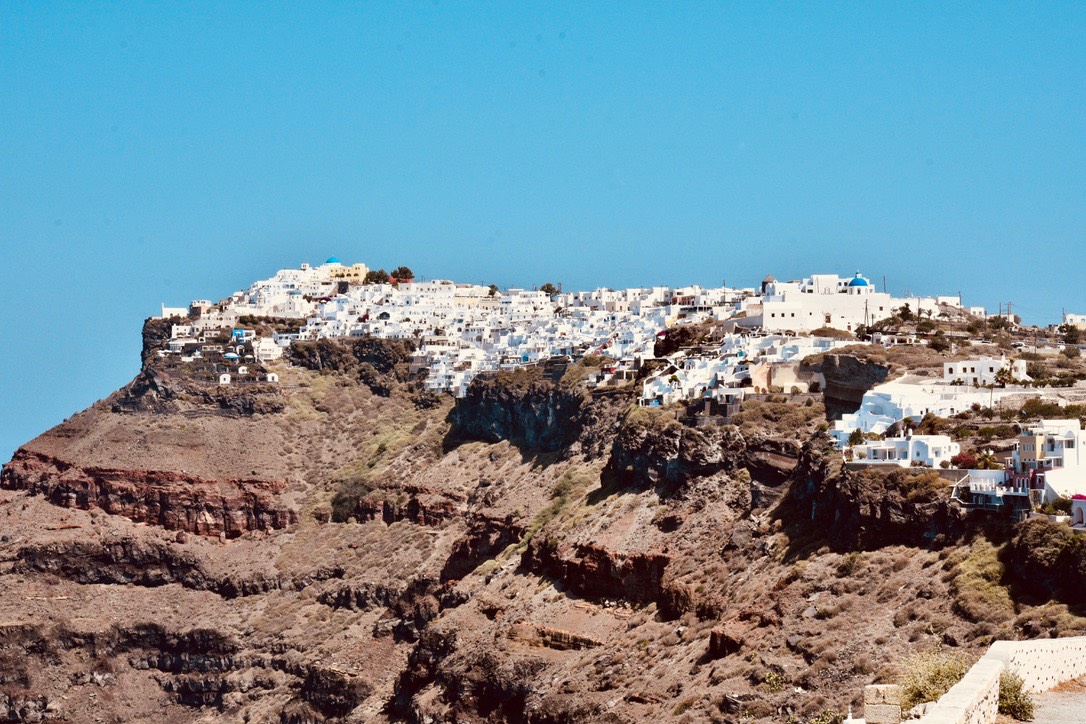
Across the island lies the village of Imerovigli, known for its well-preserved Greek Orthodox churches that have survived centuries of volcanic and seismic activity. Nearly all churches in Santorini are small and are usually maintained by a single family; their distinctive white and blue colors date back to a conflict between the Orthodox and Catholic Churches, during which Orthodox families painted their dwellings white and blue (the traditional colors of Greece) and Catholic homes were painted yellow (the color of the Vatican and the Pope). The oldest of the churches in Imerovigli was built around 1650.
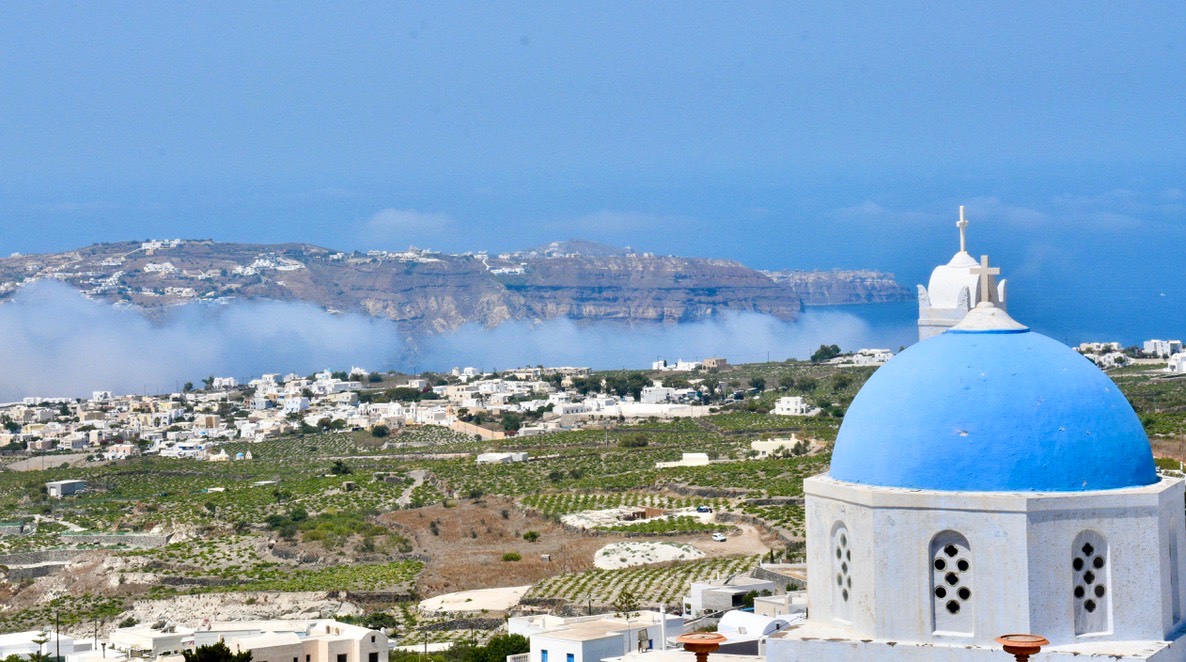
We then visited the famous Red Beach. The volcanic rocks that make up the beach are extremely rich in iron, and their distinctive red hue comes from the rust that forms when the rocks are exposed to open air.
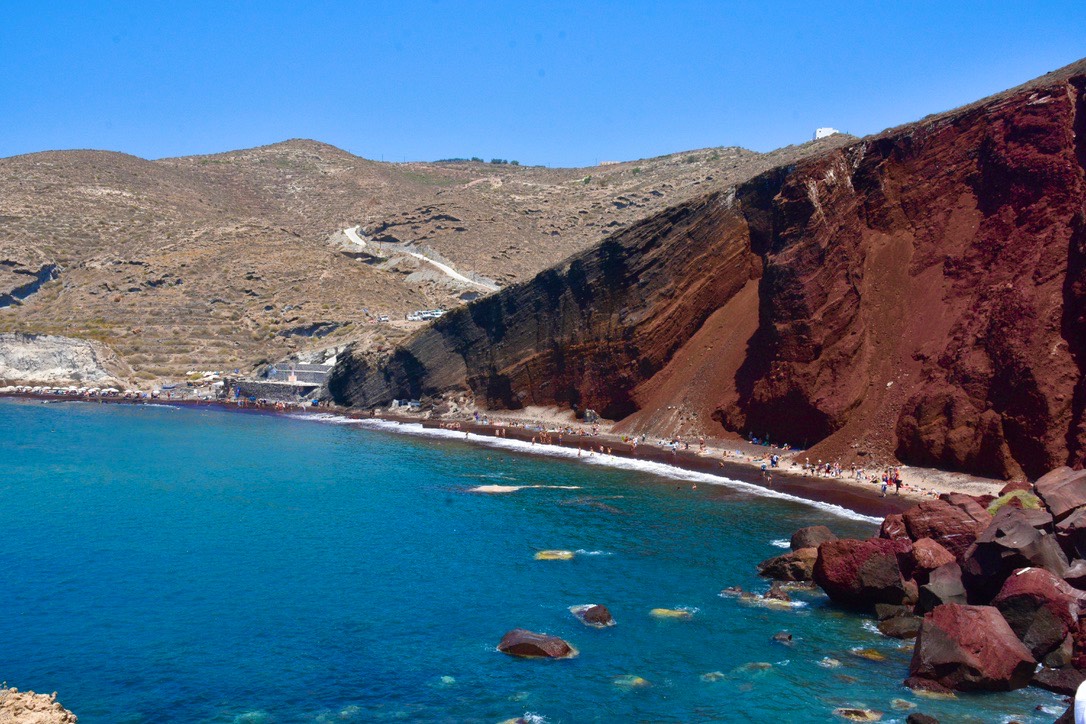
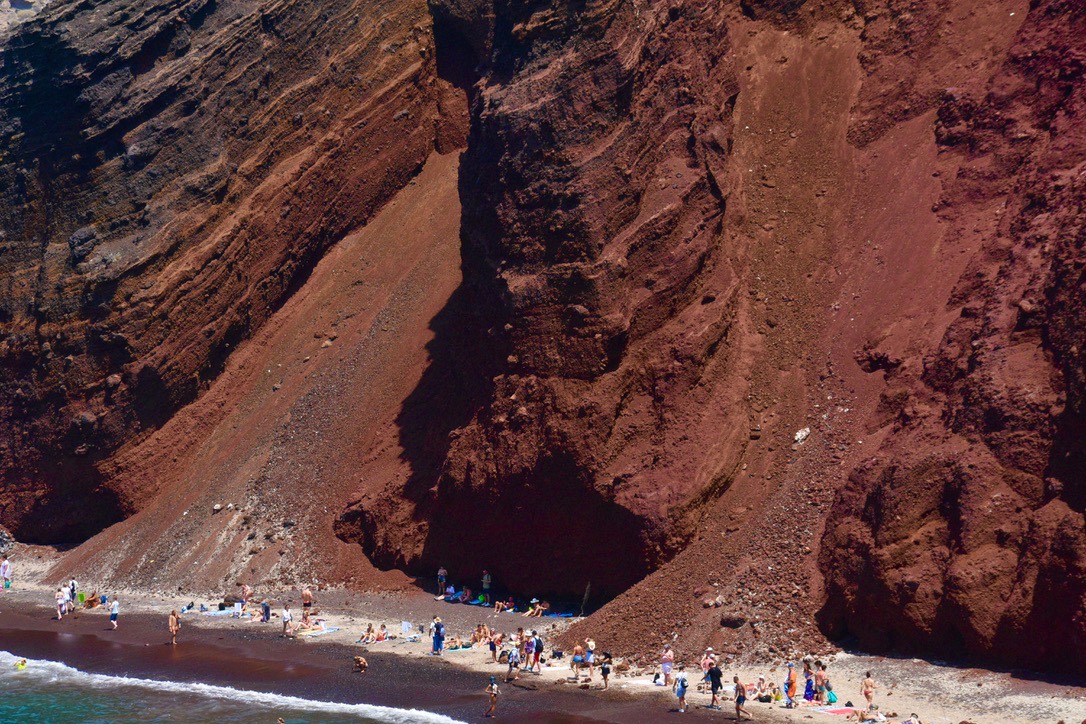
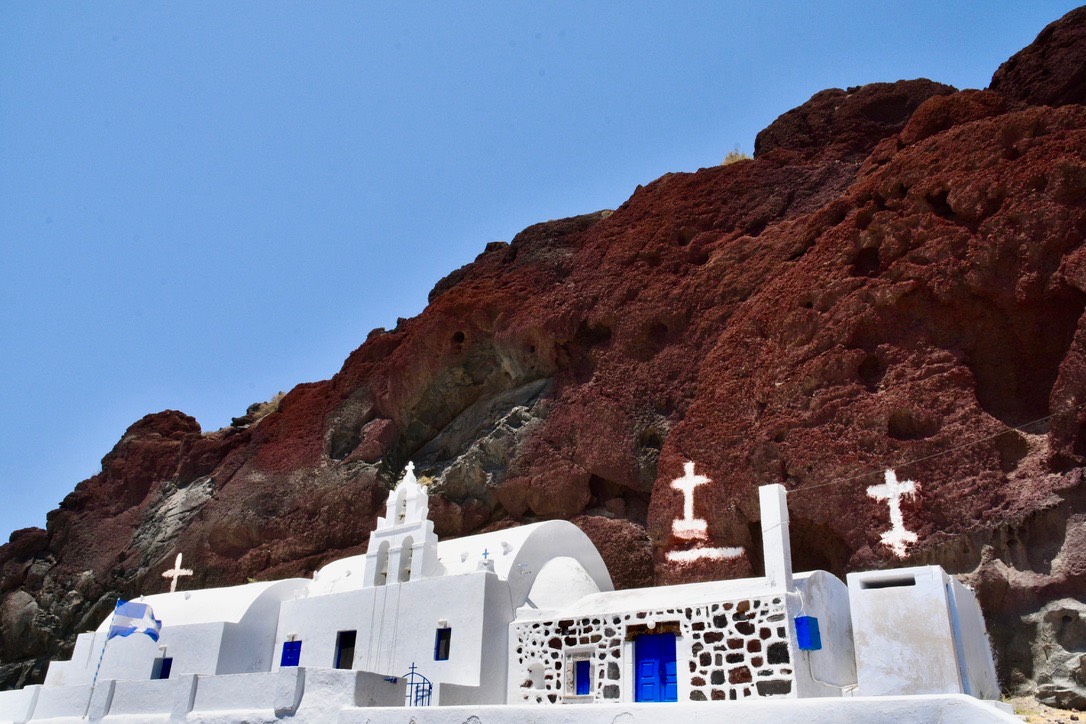
Our final stop was the archaeological site of Akrotiri, the remains of a mysterious Bronze Age settlement that dates back over 3,700 years. Like Pompeii in Italy, the city was destroyed in a volcanic eruption that buried the city under many feet of ash. The city was rediscovered in 1967, and only a small portion of it has thus far been excavated.
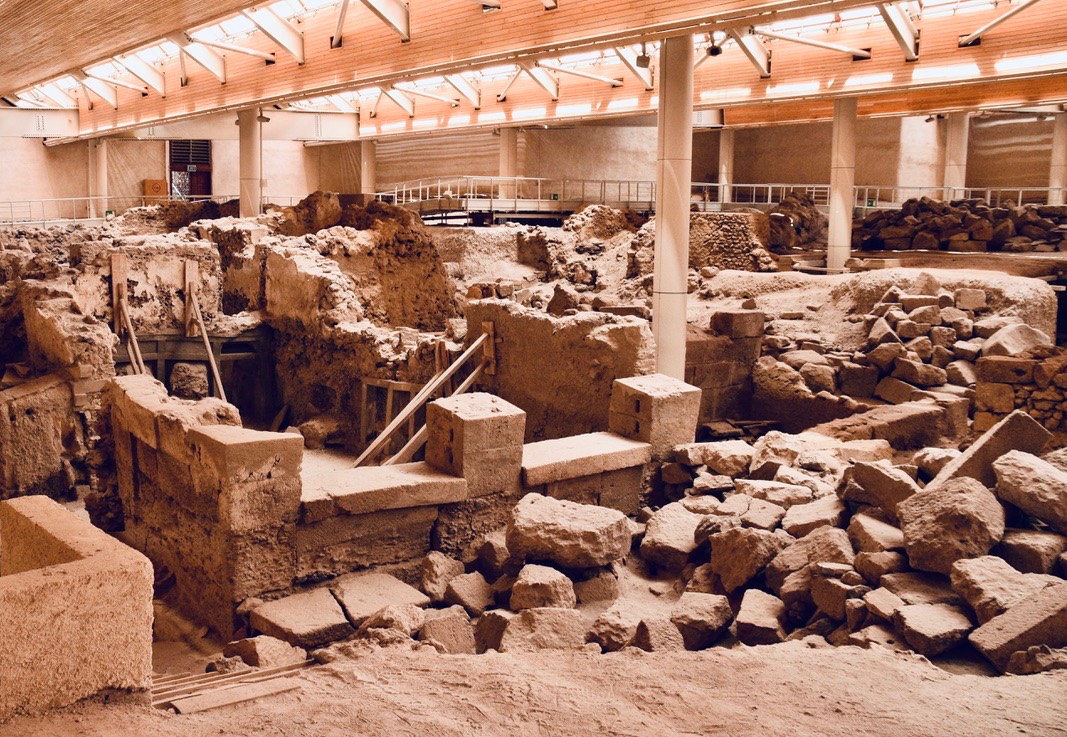
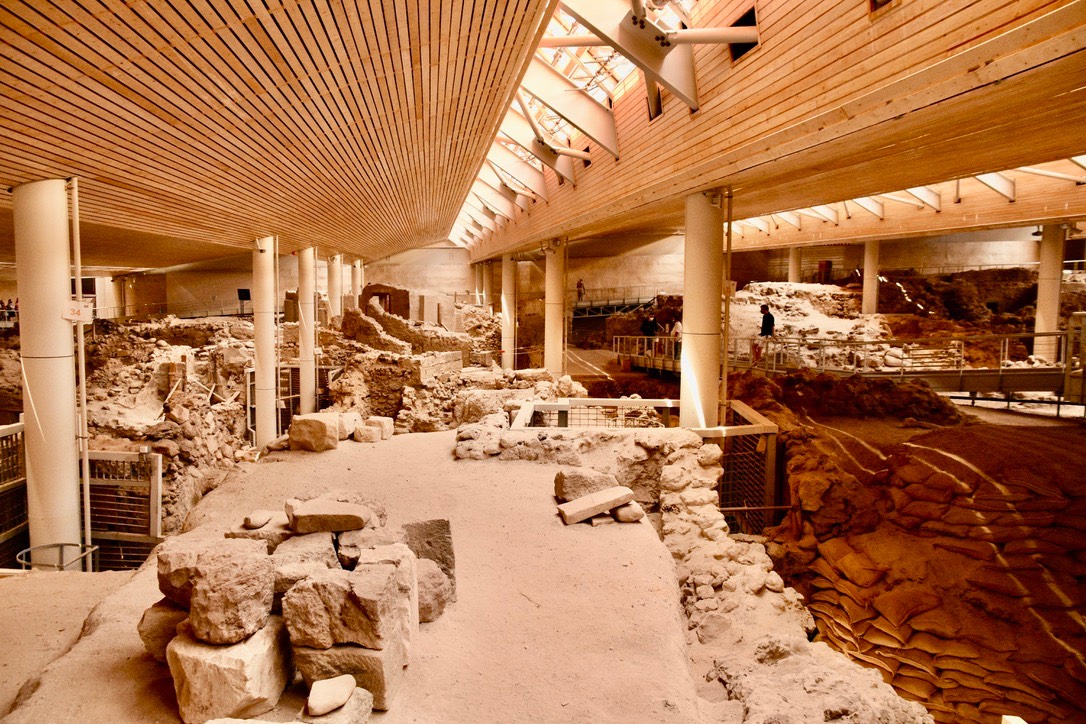
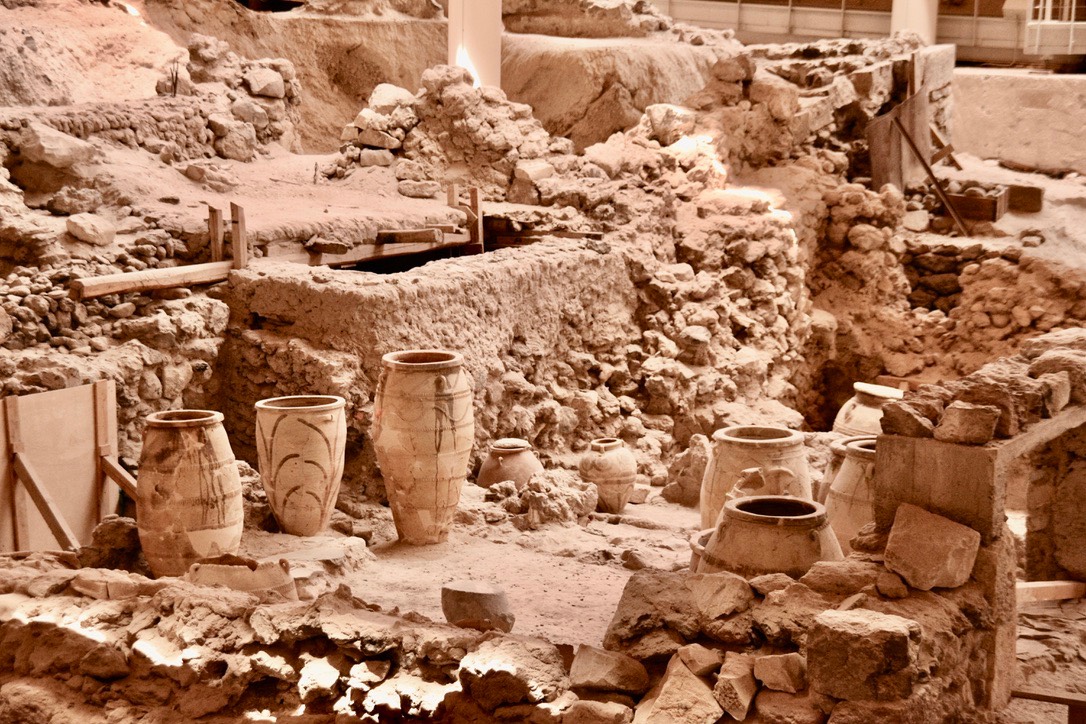
Akrotiri is a modern name; the actual names of the ancient city and the people that built it have been lost to time.
What is known is that the builders of Akrotiri were remarkably advanced. They constructed elaborately decorated stone buildings three or four stories high, with indoor plumbing and a sophisticated sewer system. They covered the walls of their homes with brightly colored frescoes and constructed beautifully carved wooden furniture. Goods from faraway lands and paintings of exotic animals, including monkeys, were found in the wreckage, showing that the residents of Akrotiri were well-traveled people who had visited Egypt, Syria, Cyprus, and even Sub-Saharan Africa.
These displays of wealth, coupled with paintings found in the ruins showing ships and sea voyages, indicate that the ancient inhabitants of Akrotiri were skilled mariners and prosperous merchants; the fact that the city had no defensive walls shows that they were at peace with the other societies of the Mediterranean.
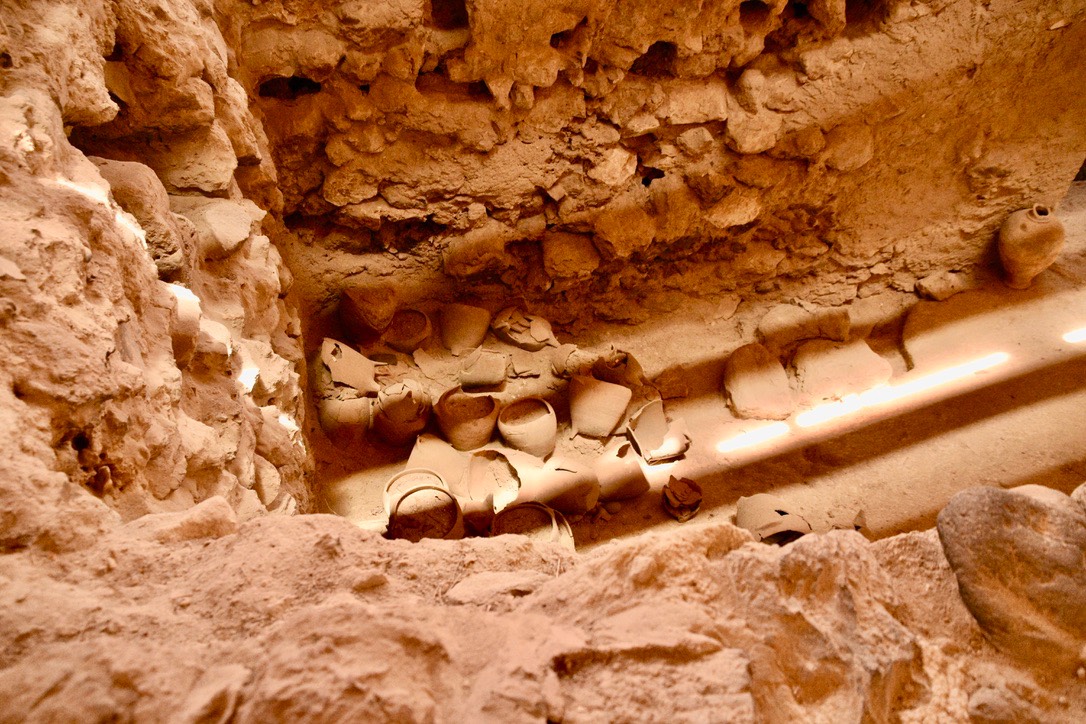
Though countless structures, artifacts, and works of art produced by these people have been unearthed, no skeletons or other human remains have ever been found in the ruins. Nobody truly knows what happened to the merchants of Akrotiri, although the leading theory is that they were killed in an attempt to evacuate the island by sea when their boats were destroyed by the 600-foot tall tsunamis created by the eruption.
We then returned to the hotel for dinner and a stroll along the beach at dusk. We have two more days in Santorini before we continue on to Dubrovnik, Croatia.
- Hayden Strong
No. 1 - Athens
15 July 2021
Yesterday afternoon, our flight arrived at Athens International Airport. Today, we embarked on an eight-hour tour of the city itself as well as the many villages that dot the Aegean coastline just outside of the city limits.
Our first destination was, fittingly, the Acropolis, home to the most important religious sites of ancient Athens. The majority of the structures that still stand at the site were built about 2,500 years ago on the orders of Pericles, one of the most respected leaders of democratic Athens. It is said that he was chosen by the people to lead the city in nearly forty consecutive elections.
To enter the Acropolis, one must pass through its main gate. The great doorway was once occupied by a pair of massive wooden doors covered in bronze decoration. Though the gateway’s wooden roof has long since deteriorated, much of its stone structure remains; remarkably, the Ionic column capitals and ceiling coffers are intact. The ceiling would have once been painted blue, with each panel containing a gold star, to give the illusion that one is passing beneath the sky.
The Parthenon is the largest and most important of the temples located within the Acropolis complex, consisting of a Doric collonade that wraps around an internal structure that originally housed a massive bronze statue of the goddess Athena, to whom the temple is dedicated (and the city in which it stands is named for.) The frieze of the temple once featured carvings of heroes, warriors, and monsters, as well as the triglyphs (sets of vertical grooves) that still exist there today. The pediment, or peaked element atop the temple, once housed detailed sculptures of all twelve Olympian gods, depicting the scene of Athena’s birth.
The Erechtheion is another temple located on the site, dedicated to both Poseidon and Athena. It is known for the famous Caryatid Porch, the roof of which is supported by sculptures depicting women from the nearby village of Caryae.
The temple was built upon the site where, at least according to legend, the city of Athens got its name. Myth has it that Athena and Poseidon were fighting to determine who the patron god of the city (then called a different name) should be. Zeus threw down a lightning bolt to break up the fight, and instead suggested a contest— whoever could procure the greatest gift would become the patron of the city. Poseidon struck the ground with his trident to create a saltwater spring; beautiful, but undrinkable. Athena, goddess of wisdom, instead planted the first olive tree, thus winning the contest. The city was then renamed Athens in her honor.
The temple has a hole in its ceiling where Zeus supposedly threw his mighty thunderbolt; additionally, one can see the hole said to have been formed when Poseidon struck the Earth with his trident.
This theatre was built roughly a century after the rest of the Acropolis complex, and once had a wooden roof. Its marble seats have been restored, and the structure is now used to concerts and other events.
Here, the remains of the complex's original ampitheatre, with portions of its original tiled flooring intact. It was here that the great Greek tragedies, such as Oedipus Rex and the Oresteia, were first performed.
From the top of the Acropolis, one can see Athens in its entirety. At the base of the Acropolis once stood the Agora (public space), shown above, which housed all important government buildings as well as the courts, where wrongdoers would be tried before a panel of ten judges.
Our next destination was the Acropolis Museum, a modern structure completed in 2009 and designed to house the most significant archaeological artifacts recovered from the site. Above, the original statues that held up the roof of the Caryatid Porch; the missing statue is on display in the British Museum in London.
Photography was forbidden in much of the museum due to the sensitive nature of the artifacts, many of which still had traces of their original paint; most of the white marble sculptures and reliefs found at the Acropolis were once brightly colored.
We then ventured out of the city and along the coast, driving through tunnels hewn by hand from millennia-old rock and on roads perched precariously above the azure Aegean. We eventually arrived at the Cape of Sounio, which was once an important strategic position; all ships entering Athens would have to round this cape. For this reason, a massive temple to Poseidon, god of the sea, was constructed at its summit.
Our last stop was the Panathenaic Stadium, which hosted the first modern Olympic Games in 1896 as well as some events of the more recent 2004 Athens Olympics.
Tomorrow, we leave Athens in the early morning and board a high-speed ferry to the island town of Santorini, four hours from Athens by sea.
- Hayden Strong
Hayden’s Page: The Balkans
12 July 2021
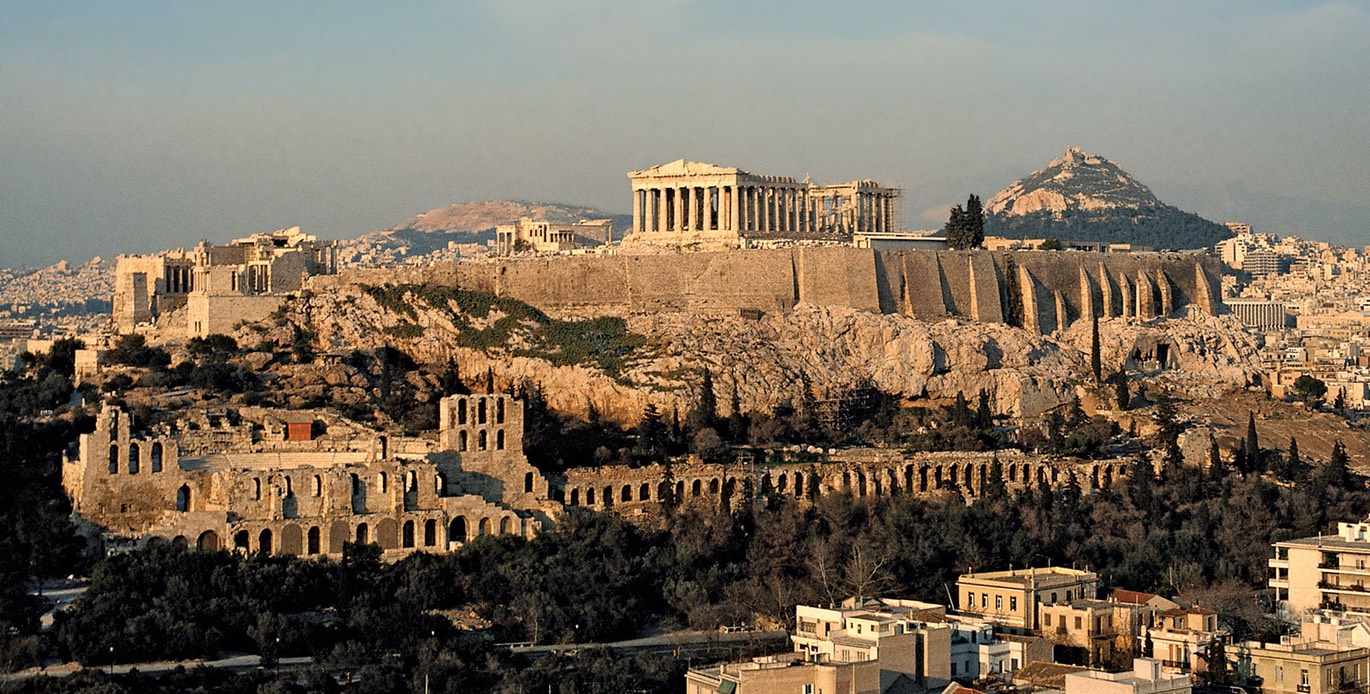
Tomorrow night, we fly to Athens, birthplace of democracy, cradle of Western civilization, and cosmopolitan capital of the modern-day Greek state. In Greece, we will explore the archaeological sites and museums of Athens and travel to the volcanic black sand beaches of Santorini. After a few days in Greece, we will fly to Croatia and explore the winding cobblestone streets of Dubrovnik, one of the world’s best-preserved fortified medieval cities. We will then journey down the Adriatic coast by car, visiting traditional Croatian villages before crossing the Montenegrin border and arriving in Kotor, a bayside city built as a trading center by the Renaissance-era Venetians— photographing and documenting everything that we see and experience.
Hayden’s Page goes live upon arrival at Eleftherios Venizelos International Airport on Wednesday evening!